
2023
BBB Scam Tracker
SM
RISK
REPORT
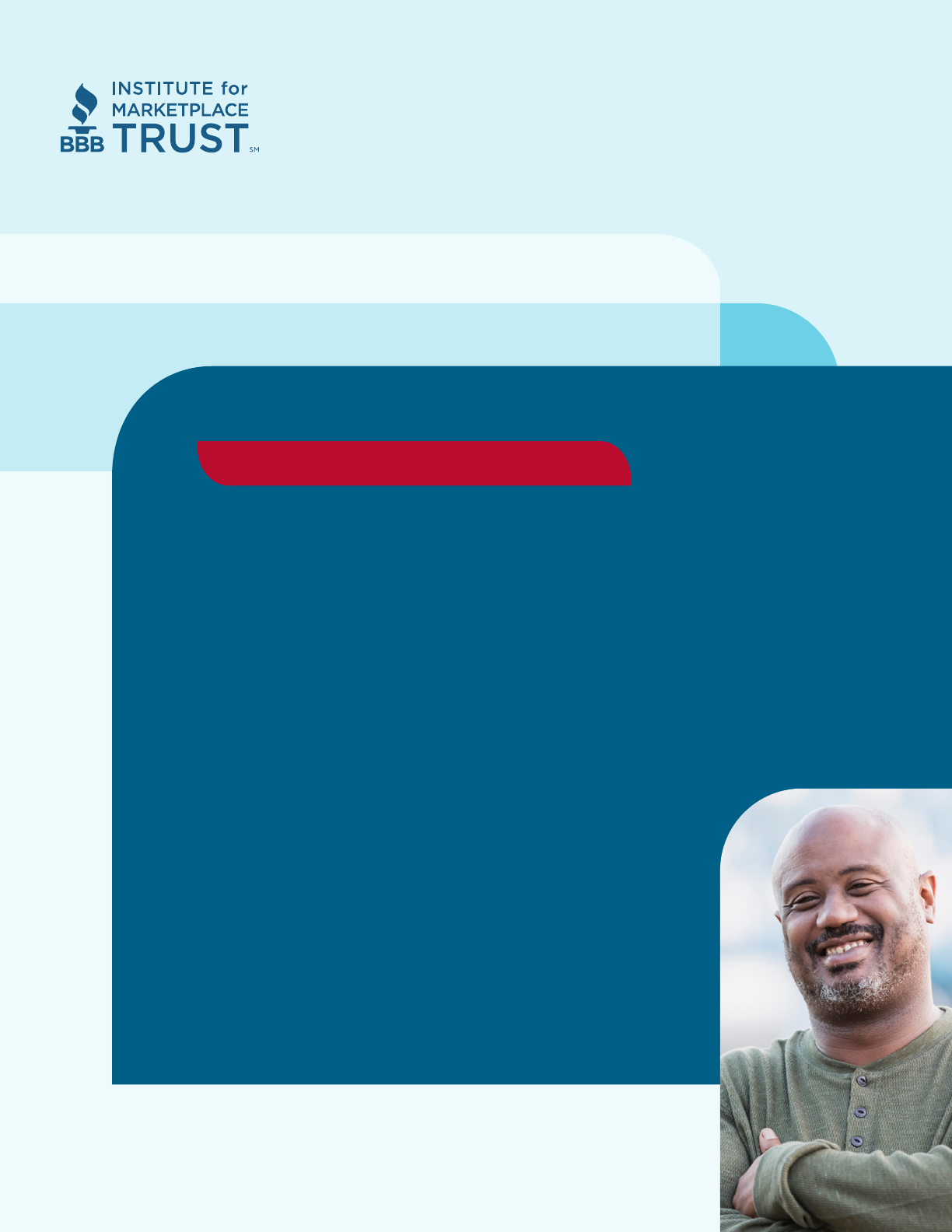
All third-party trademarks referenced by BBB Institute for
Marketplace Trust
SM
remain the intellectual property of their
respective owners. Use of the third-party trademarks does
not indicate any relationship, sponsorship, or endorsement
between BBB Institute for Marketplace Trust and the owners
of these trademarks. Any references by BBB Institute for
Marketplace Trust to third-party trademarks is to identify the
corresponding third party.
2023
BBB Scam Tracker
SM
RISK
REPORT

4
Introduction
4
About BBB Scam Tracker
SM
6
8
Snapshot of 2023
– 2023 Risk Report highlights
9
BBB Risk Index: A three-dimensional approach
to measuring scam risk
12
13
Riskiest scams reported by consumers in 2023
– 10 riskiest consumer scams
14
More people reported losing money
to romance scams this year
16
Credit repair/debt relief scams
make the top 10 list for the first time
18
18
19
20
Demographics
– Age
– Scams targeting youth
– Gender
21
Contact and payment methods
29
29
30
Impact on specific audiences
– Canadian consumers
– Impersonated organizations
31
Carrot versus stick: Analyzing the impact of scam tactics
33
Self-reported cues and behaviors that
helped people avoid losing money
34
Other factors that may impact victimization
38
Scams targeting businesses
39
10 general tips for avoiding a scam
40
BBB Institute for Marketplace Trust
42
Appendix A: Glossary of scam types
45
Appendix B: Scam type data table, consumer scams
46
Appendix C: Top 10 consumer scam types by overall risk,
exposure, susceptibility, and median dollar loss
47
Acknowledgements
48
Project team
Table of
Contents

Introduction
The BBB Institute for Marketplace Trust (BBB Institute), the educational
foundation of the International Association of Better Business Bureaus, is
pleased to present the 2023 BBB Scam Tracker Risk Report. The annual report
analyzes data that individuals and businesses submitted to BBB Scam Tracker
SM
(BBB.org/ScamTracker) in 2023. The findings shed light on how scams are
perpetrated, who is being targeted, which scams have the greatest impact, and
which behaviors and factors may impact a person’s susceptibility. Highlights of
the 2023 report are provided in Figure 3.
Scams undermine trust in the marketplace, distort the level playing field, and
siphon money from legitimate transactions that could benefit both consumers
and businesses, thus impeding economic growth. A healthy marketplace requires
empowered and knowledgeable consumers and principled businesses that are
proactively working to stop scammers and to foster trustworthy relationships.
Combatting scammers requires a multisector effort. BBB shares its data with
partners that also work to combat fraud in the marketplace, such as government
agencies and law enforcement, not-for-profits, the media, and the business
community. We collaborate with partners to strategize about the best ways
to stop scammers, and we team with corporate partners and like-minded
organizations to expand our programming and consumer education activities,
evaluate which efforts are working, and continually update them based on
internal and external research and data.
BBB Institute uses the findings in this report to create consumer education
resources that empower people to protect themselves and others. Through the
expansive network of BBBs that serve communities throughout the United States
and Canada, BBB Institute then delivers consumer education programs digitally
and in person.
About BBB Scam Tracker
The BBB Scam Tracker Risk Report is made possible with data collected via BBB
Scam Tracker, an online platform that enables consumers and businesses to
report fraud and fraud attempts. The network of BBBs reviews and posts these
4 BBB.org/ScamTracker | 2023 BBB SCAM TRACKER RISK REPORT
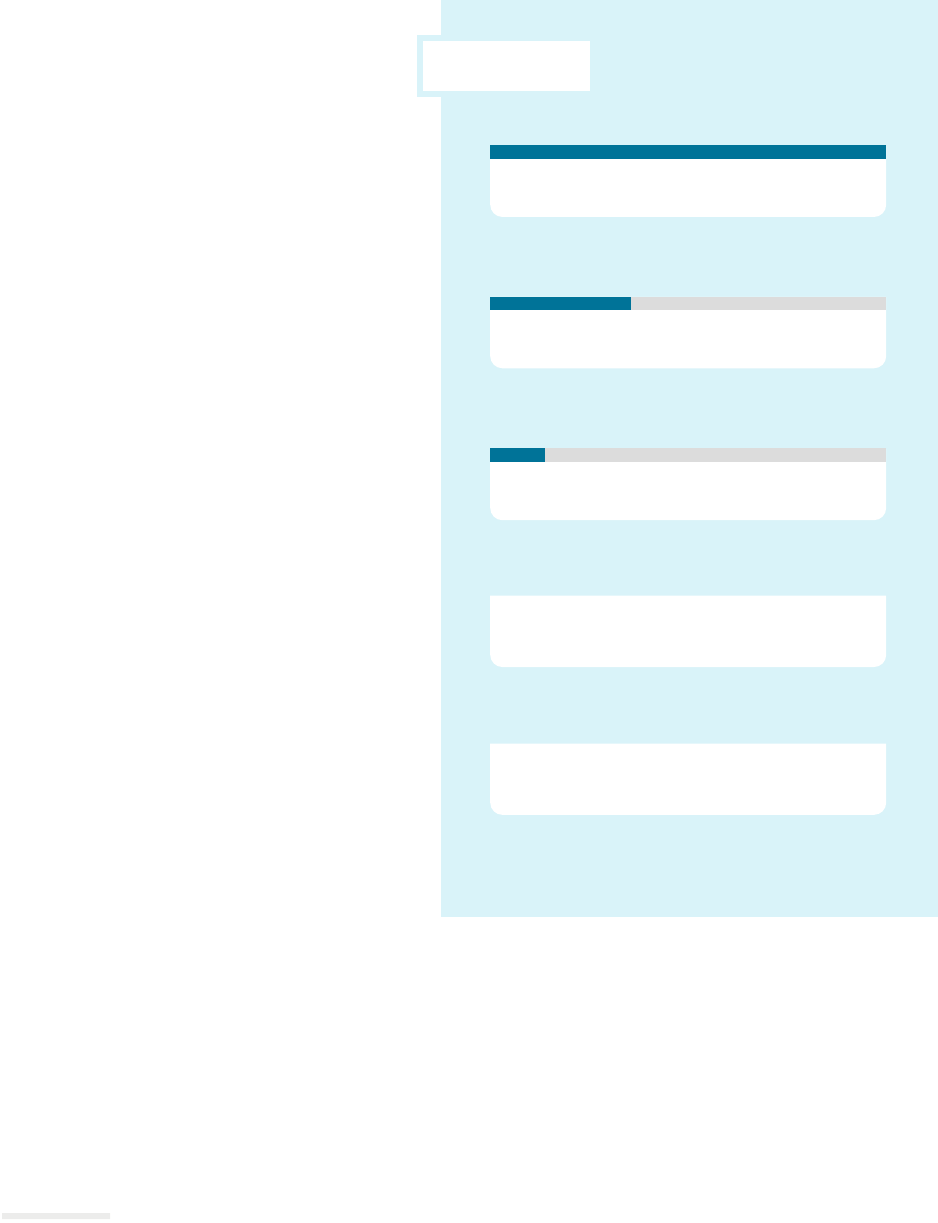
reported instances of fraud so
that the public can search through
published scams, determine whether
they’re being targeted, and avoid
losing money.
According to a survey of BBB Scam
Tracker reporters,
1
37.8% said they
visited the BBB Scam Tracker website
to determine whether a situation they
were experiencing could be a scam,
and 36.6% of those said the scam-
tracking tool helped them avoid losing
money when targeted by a scam.
With more than 1.7 million people
visiting the platform in 2023,
2
we
estimate BBB Scam Tracker saved
people $24.3 million in 2023 alone
(Figure 1).
Reporters to the BBB Scam Tracker
website sought to warn others about
a scam (44.3%), help law enforcement
stop the scammer (25.2%), and avoid
losing money to a scam attempt
(30.5%).
3
We extend our thanks to the
hundreds of thousands of people who
chose to speak out and help others
avoid losing money to scammers by
reporting to BBB Scam Tracker.
1
Web-intercept survey with 1,027 unique respondents who visited BBB Scam Tracker in January 2024. Respondents could choose
multiple reasons for visiting BBB Scam Tracker.
2
Adobe Analytics.
3
A survey was distributed to those who submitted a scam report to BBB Scam Tracker in 2023; 6,947 respondents completed the survey.
FIGURE 1
2023 BBB Scam Tracker
impact
Median U.S. dollar amount saved
Estimated dollar amount people avoided losing
thanks to BBB Scam Tracker
36.6%
$100
$24,259,931
Said BBB Scam Tracker helped them
avoid losing money
1,753,544
37.8%
Visited BBB Scam Tracker to determine
whether they were experiencing a scam
Unique visitors to BBB Scam Tracker
5 BBB.org/ScamTracker | 2023 BBB SCAM TRACKER RISK REPORT

Snapshot of 2023
The data and insights gleaned from BBB Scam Tracker reports enable BBB Institute
to better understand the impact of scams being perpetrated in the marketplace. In
2023, BBB Scam Tracker published more than 67,000 reported scams. Scam reports
submitted by businesses and individuals across the United States and Canada were
classified into 28 consumer scam types, five business scam types, and an “other”
category that represented 7.7% of all reports. See Appendix A for a full glossary of
scam types. Data collected in scam reports includes a description of the scam, the
dollar value of any loss, and information about the means of contact and method of
payment. Demographic data (age, gender, and postal code) about the person targeted
by the scam is optional for businesses and individuals to submit via the BBB Scam
Tracker platform. See Appendix B and Appendix C for detailed data by scam type.
Overall susceptibility rose while median dollar loss dropped.
In 2023, susceptibility (the percentage of people who reported losing money when
exposed to a scam) increased for the first time since 2020, up 27.8% from the year
before (Figure 2). Reported median dollar loss dropped 41.5%, from $171 in 2022 to
$100 in 2023.
4
Investment/cryptocurrency scams were the riskiest.
In 2023, a shift occurred in our list of top 10 riskiest scams. Investment scams
have frequently ranked in the top 10 riskiest scams since we began publishing the
Risk Report. In 2019, we added a category for cryptocurrency scams, which have
appeared consistently in the top three riskiest scams ever since. This year, we
combined investment and cryptocurrency scams into one category because most
cryptocurrency scams involved investment opportunities. The result was investment/
cryptocurrency scams rising to the top of our list of riskiest scams, with a high
percentage of people reporting a monetary loss (80.4%) and a high median dollar
loss ($3,800).
Employment scams remained the No. 2 riskiest scam type, with a high median dollar
loss of $1,995. Reports of employment scams rose 54.2% from 2022 to 2023.
4
Median dollar loss was calculated only for scams with a reported loss.
6 BBB.org/ScamTracker | 2023 BBB SCAM TRACKER RISK REPORT
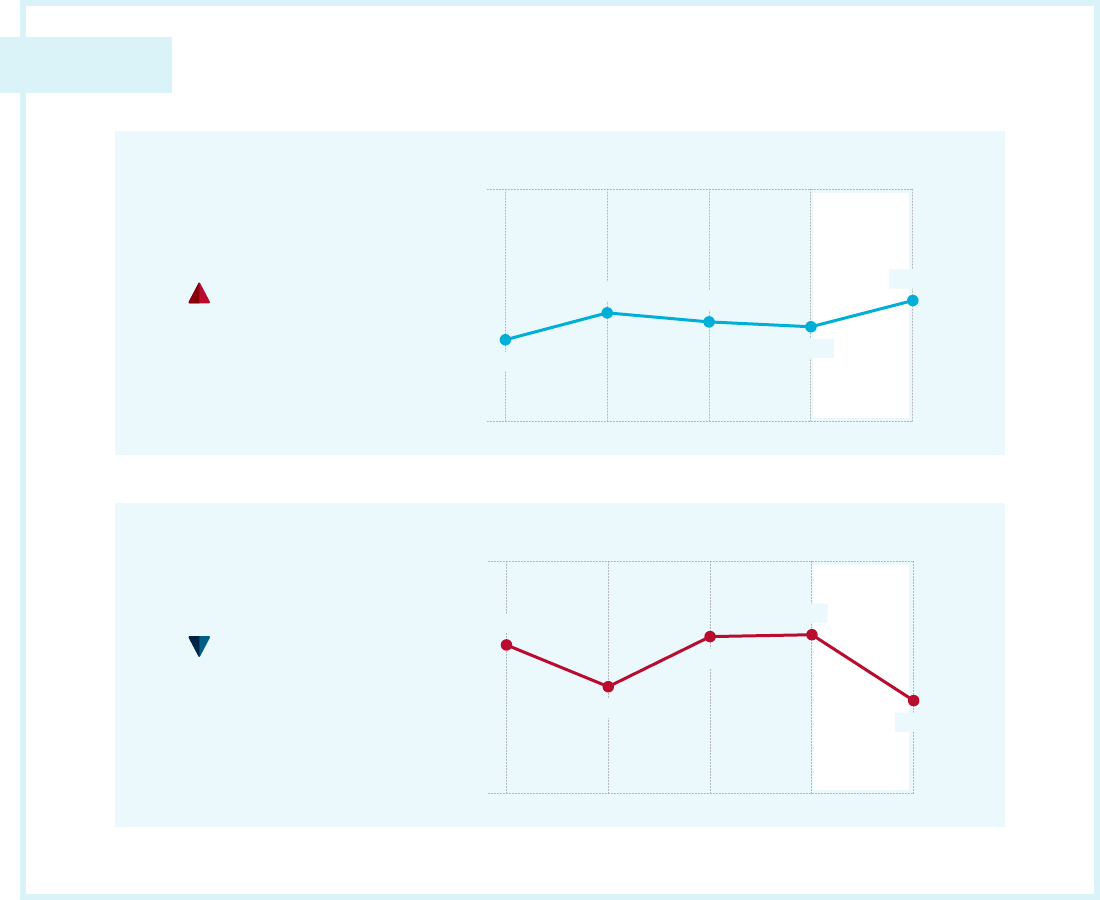
Although online purchase scams had the highest number of reports to BBB Scam Tracker
again this year and the second-highest susceptibility, this scam type dropped to No. 3
on our list after three years as the No. 1 riskiest scam type. You can find more information
about our top 10 list on page 13.
How scammers engaged their targets
In 2023, the top three contact methods resulting in a reported monetary loss remained
the same as in 2022, with a shift in order. For the first time, social media overcame website
as the top means of contact with a monetary loss. Credit cards remained the top payment
method for scams with a monetary loss, followed by bank account debit and online
payment system. Susceptibility for scams perpetrated by social media rose 23.8% from
the previous year. You can find more information on pages 21-28.
FIGURE 2
Snapshot of risk (2019–2023)
SUSCEPTIBILITY
Percentage of reports that
include a dollar loss
MONETARY LOSS*
Median reported dollar loss
41.5%
DECREASE
from 2022
27.8%
INCREASE
from 2022
* Median dollar loss was calculated only for scams with a reported loss.
2019 2020 2021 2022 2023
2019 2020 2021 2022 2023
0.0
%
100.0
%
35.1
%
46.7
%
42.8
%
40.7
%
52.0
%
0
60k
37,283
46,575
46,143
40,503
0
$
0
$
250
$
160
$
115
$
169
$
171
$
100
7 BBB.org/ScamTracker | 2023 BBB SCAM TRACKER RISK REPORT
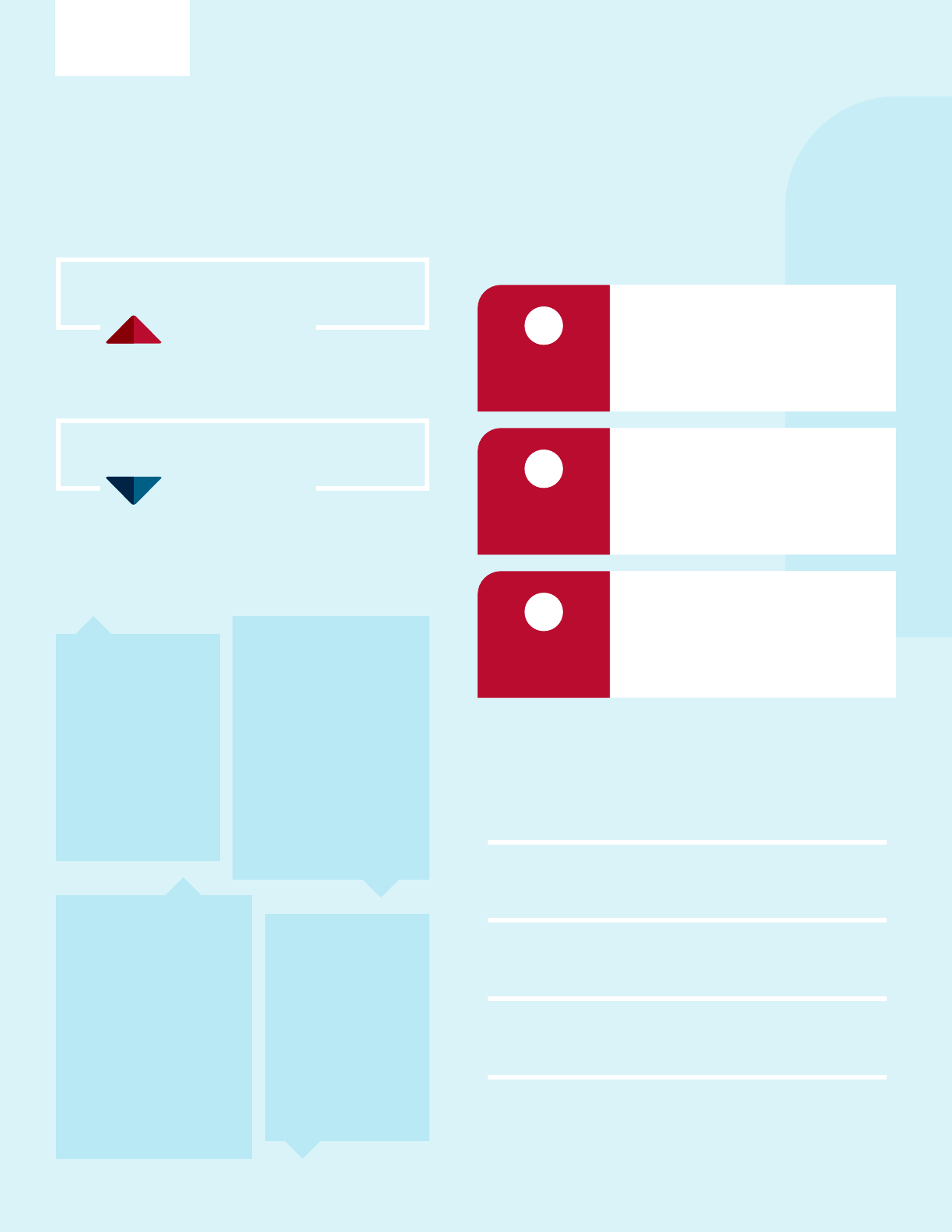
2023 BBB Scam Tracker Risk Report
HIGHLIGHTS
SURVEY RESEARCH HIGHLIGHTS
of survey
respondents
said they will
be able to spot
the red flags
of a similar
scam in the
future.
92.5%
People ages
18–54 prefer
getting
information
about scams
from social
media stories,
whereas people
ages 55+ prefer
receiving scam
alerts.
Scams perpetrated online continued to grow,
making up 68.4% of all reports. More concerning,
online scams were more likely to result in a
reported monetary loss than scams perpetrated
in person or via phone.
For the second year in a row, people ages 18 to 24
reported the highest median dollar loss of all
age groups.
The percentage of people who reported engaging
with a scammer via social media rose 63.8% from
2022 to 2023.
The U.S. Postal Service was the organization
reported to be the most often impersonated
by scammers in 2023.
Romance scams rose from No. 7 to No. 5 on the list
due to a significant increase in susceptibility and
a high median dollar loss.
of survey
respondents
reported losing
money to a
scam at least
three times,
up from 8.4%
in 2022.
10.3%
Anxiety/stress
was the top
emotion reported
by people ages
18–44 after being
targeted by a
scam.
Anger was the top
emotion reported
by people ages
45+.
52.0%
27.8%
INCREASE from 2022
LIKELIHOOD
OF LOSS
OVERALL SUSCEPTIBILITY
$100
41.5%
DECREASE from 2022
MEDIAN $
LOSS
OVERALL MONETARY LOSS
FIGURE 3
TOP 3 RISKIEST SCAMS
REPORTED BY CONSUMERS
Investment/cryptocurrency scams
rose to become the No. 1 riskiest
scam type, with the third-highest
susceptibility and the second highest
median dollar loss.
1
Investment/
cryptocurrency
scams
Employment scams remained the
No. 2 riskiest scam type, with a high
median dollar loss of $1,995. Reports
of employment scams rose 54.2%
from 2022 to 2023.
2
Employment
scams
More than 40% of scams reported
to BBB Scam Tracker were online
purchase scams, which for the first
time since 2019 fell to No. 3 on the list
of riskiest scams.
3
Online
purchase
scams
8 BBB.org/ScamTracker | 2023 BBB SCAM TRACKER RISK REPORT
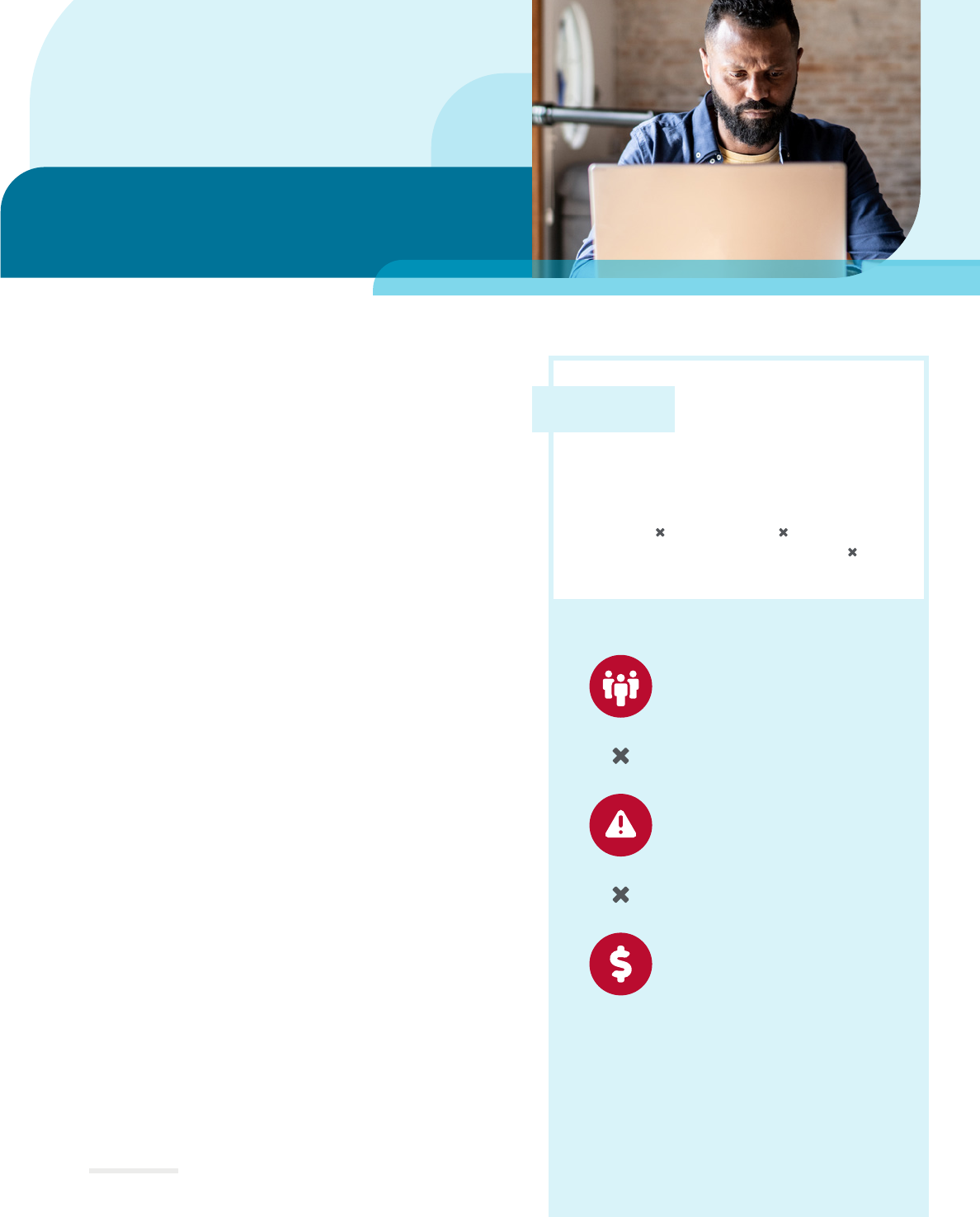
BBB Risk Index: A three-dimensional
approach to measuring scam risk
To better understand which scam types pose the highest
risk, we assessed scams on the basis of three factors:
exposure, susceptibility, and monetary loss. This unique
formula makes up the BBB Risk Index (Figure 4). By
combining these three factors, we gain a meaningful
understanding of scam risk that goes beyond the volume
of reports received and enables BBB and its partners to
better target scam-prevention efforts.
Risk cannot be determined by viewing just one of these
factors in isolation. For example, scams that occur
in high volumes typically target as many people as
possible but yield a lower likelihood of monetary loss. In
comparison, scams with a “high-touch” approach often
reach fewer individuals, but those exposed individuals
are often more likely to lose money and to lose higher
amounts of money.
The BBB Risk Index does not factor in the non-financial
impacts of scams. According to our survey research,
people also reported losing time (55.8%) and personal
information (37.7%) (Figure 5).
5
We also asked people about the emotional impact of
being targeted by a scam (Figure 6). The No. 1 emotion
they reported was anger (69.0%), followed by anxiety
and stress (66.7%). Loss of trust was the third most
common response (58.0%).
FIGURE 4
BBB Risk Index
The formula for calculating the BBB Risk Index
for a given scam type in a given population is:
Exposure Susceptibility
(Median Loss / Overall Median Loss) 1,000.
EXPOSURE*
is a measure of the prevalence
of a scam type, calculated as
the percentage of a particular
scam type as part of the total
scams reported.
SUSCEPTIBILITY
is a measure of the likelihood of
losing money when exposed to
a scam type, calculated as the
percentage of all reports that
included a monetary loss.
MONETARY LOSS
is calculated as the median
dollar amount of losses
reported for a particular scam
type, excluding reports where
no loss occurred.
* Exposure is limited by the nature of self-reporting;
the percentage of those who reported to BBB
Scam Tracker does not necessarily match the
percentage of people in the full population who
were targeted by scams.
5
A survey was distributed to those who submitted a scam to BBB Scam
Tracker in 2023; 6,947 respondents completed the survey.
9 BBB.org/ScamTracker | 2023 BBB SCAM TRACKER RISK REPORT
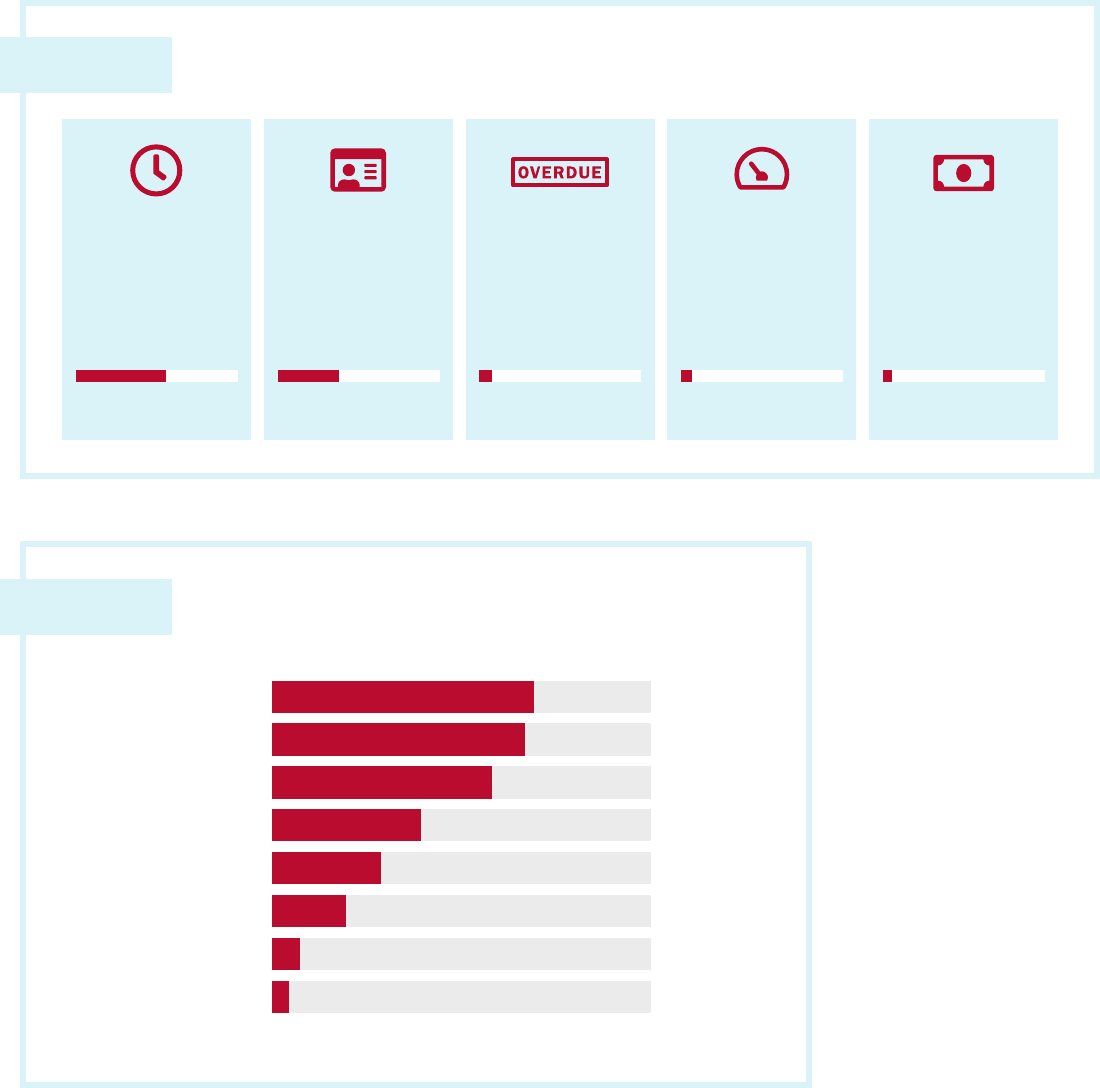
FIGURE 5
Other impacts of being targeted by a scam
Lost time
of responses
Lost personal
information
of responses
Lost credit
health
(credit score)
of responses
Lost potential
earnings
of responses
Financial
stability
impacted
of responses
55.8
%
37.7
%
6.9
%
5.7
%
8.1
%
FIGURE 6
Top emotions/impact of being
targeted by a scam
Anger
Anxiety/stress
Loss of trust
Shame/embarrassment
Loss of confidence
Guilt
Strained relationships
Loss of reputation
69.0
%
66.7
%
58.0
%
39.4
%
28.7
%
19.6
%
7.5
%
4.6
%
A breakdown by age group highlights some interesting differences (Figure 7). People
between the ages of 18 and 44 named anxiety/stress as the No. 1 emotional impact,
whereas those aged 45+ cited anger as the No. 1 emotional impact. Younger people
reported higher percentages of feeling shame/embarrassment, loss of confidence,
and guilt.
When asked
about the
emotional
impact of being
targeted by a
scam, people
reported anger
as the number
one emotion,
followed by
anxiety and
stress.
10 BBB.org/ScamTracker | 2023 BBB SCAM TRACKER RISK REPORT
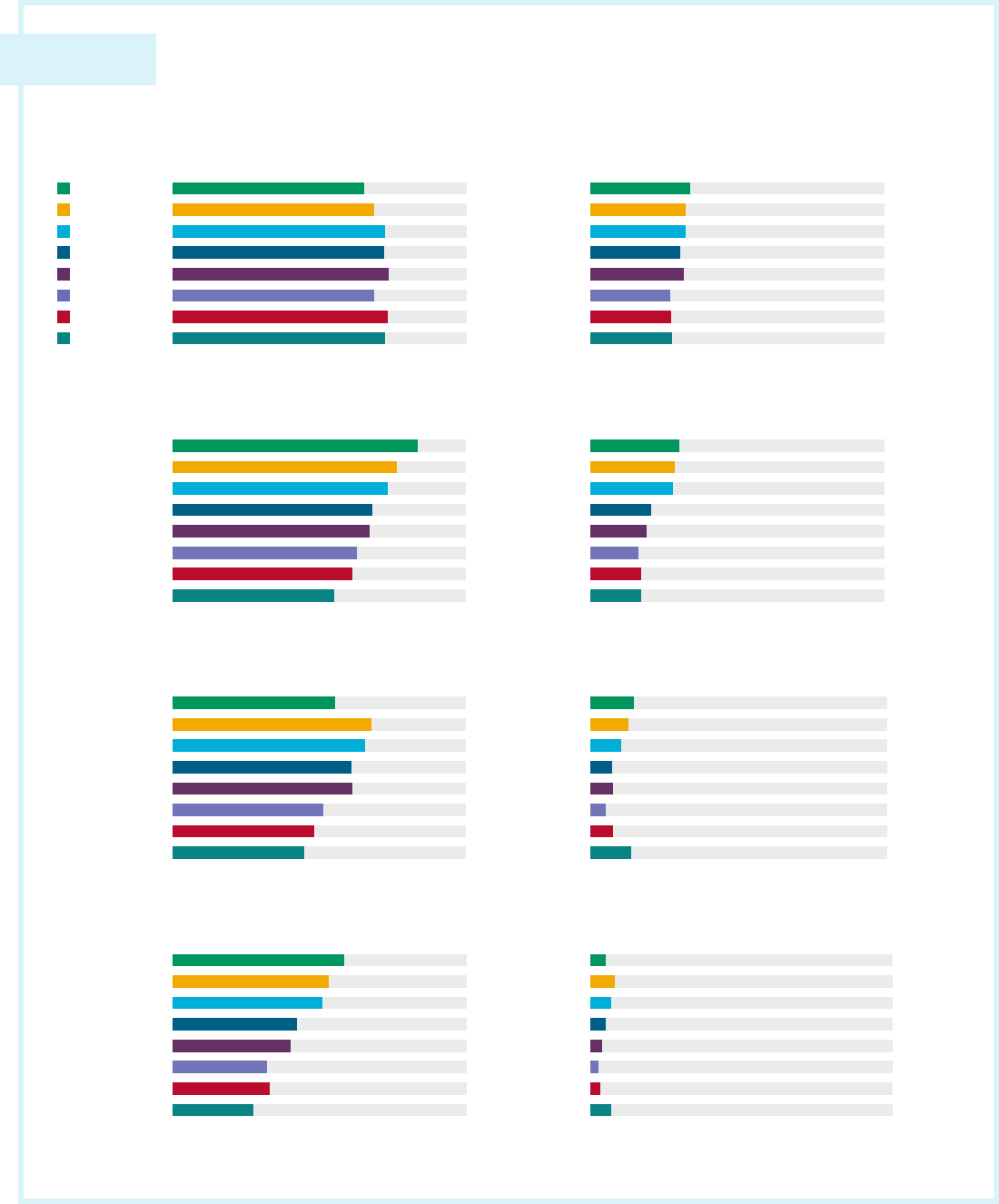
FIGURE 7
Emotional impact of being targeted by a scam (by age)
83.5
%
76.6
%
73.5
%
68.0
%
67.2
%
62.8
%
61.4
%
55.2
%
55.3
%
67.8
%
65.5
%
61.0
%
61.2
%
51.3
%
48.4
%
44.8
%
34.0
%
32.4
%
32.4
%
30.4
%
31.6
%
27.2
%
27.3
%
27.6
%
14.6
%
12.7
%
10.3
%
7.2
%
7.7
%
5.0
%
7.5
%
13.8
%
30.1
%
28.6
%
28.0
%
20.7
%
19.1
%
16.3
%
17.2
%
17.2
%
58.3
%
53.3
%
51 .1
%
42.3
%
40.2
%
32.3
%
33.1
%
27.6
%
65.1
%
68.7
%
72.4
%
72.0
%
73.7
%
68.6
%
73.1
%
72.4
%
4.9
%
7.9
%
6.8
%
5.1
%
3.9
%
2.5
%
3.3
%
6.9
%
Anger Loss of confidence
Anxiety/stress Guilt
Loss of trust Strained relationships
Shame/embarrassment Loss of reputation
85+
75–84
65 –74
55–64
45–54
35–44
25–34
18–24
11 BBB.org/ScamTracker | 2023 BBB SCAM TRACKER RISK REPORT

10 riskiest scams reported
by consumers in 2023
Credit repair/
debt relief
scams appeared
on the list of 10
riskiest scams
for the first time
since we began
publishing the
BBB Scam
Tracker Risk
Report in 2016.
Each year, BBB publishes its list of 10 riskiest scam types (Table 1), which is
calculated using the BBB Risk Index and reports submitted to BBB Scam
Tracker. In 2023, there were some significant shifts in position on the list.
Investment/cryptocurrency scams became the No. 1 riskiest scam
type this year, with 80.4% of those targeted reporting a monetary loss.
The reported median dollar loss ($3,800) was the second highest of all
scam types.
6
In 2023, employment scams remained the second riskiest scam. The
percentage of reports for this scam type rose 54.2%, from 9.6% in 2022 to
14.8% in 2023. The reported median dollar loss for employment scams rose
33%, from $1,500 in 2022 to $1,995 in 2023.
Although online purchase scams dropped to third riskiest on our list, these
scams continued to have a huge impact, with the highest percentage of
reports to BBB Scam Tracker (41.9%) and the second-highest percentage
of reports with a monetary loss (susceptibility). More than 82% of those who
reported being targeted by online purchase scams lost money. The median
dollar loss for this scam type dropped from $100 in 2022 to $71 in 2023.
Romance scams rose on the list from seventh to fifth riskiest. The reported
median dollar loss rose from $1,411 in 2022 to $3,600 in 2023. In 2023,
65.7% of romance scam reports included a monetary loss compared to only
16.1% in 2022.
Credit repair/debt relief scams appeared on the list of 10 riskiest
scams for the first time since we began publishing the BBB Scam Tracker
Risk Report in 2016. The percentage of reports with a monetary loss
(susceptibility) for this scam type rose 64.3% from 2022 to 2023. The
median dollar loss rose from $870 to $1,000.
6
This year, we combined cryptocurrency and investment scams into one category because
the majority of cryptocurrency scams involve investment scenarios.
12 BBB.org/ScamTracker | 2023 BBB SCAM TRACKER RISK REPORT

Susceptibility up overall
Overall susceptibility rose significantly in 2023, with more people reporting a monetary
loss. Beyond the top five scams mentioned above, the following scam types also saw a
significant increase in susceptibility from the previous year: counterfeit product (83.3%),
rental (64.1%), travel/vacation/timeshare (59.6%), and credit repair/debt relief (55.7%).
A full breakout of the scam types with the highest susceptibility can be found on page 46.
Overall median dollar loss down
Although overall median dollar loss dropped in 2023, several scam types outside of the
top five riskiest saw a high reported median dollar loss, including foreign money exchange
($7,400), tax collection ($2,306), fake check/money order ($1,165), credit repair/debt relief
($1,000), family/friend emergency ($900), and government grant ($948). A full breakout of
scam types with the highest median dollar loss can be found on page 46.
TABLE 1
10 riskiest consumer scams in 2023
RANK SCAM TYPE
BBB RISK
INDEX
EXPOSURE* SUSCEPTIBILITY MEDIAN $ LOSS
2023 2022 2023 2022 2023 2022 2023 2022
1 6/3
Investment/
cryptocurrency**
520.9 1.7%
0.7%/
1.7%
80.4%
49.0%/
60.5%
$3,800
$1,369/
$1,100
2 2
Employment 445.9 14.8% 9.6% 15.1% 15.1% $1,995 $1,500
3 1
Online purchase 244.9 41.9% 31.9% 82.6% 74.0% $71 $100
4 4
Home
improvement
201.2 1.3% 1.4% 74.7% 55.3% $2,073 $1,500
5 7
Romance 151.4 0.6% 1.6% 65.7% 16.1% $3,600 $1,411
6 5
Advance fee loan 57.2 1.4% 1.9% 45.3% 36.7% $900 $800
7 9
Phishing/social
engineering
56.5 12.6% 11.7% 15.0% 10.6% $300 $267
8 11
Credit repair/
debt relief
29.4 0.5% 1.1% 55.7% 33.9% $1,000 $870
9 10
Tech support 25.5 1.9% 2.6% 26.6% 25.2% $500 $490
10 13
Travel/vacation/
timeshare
23.6 0.7% 1.0% 59.6% 49.3% $543 $602
* Exposure is limited by the nature of self-reporting; the percentage of those who reported to BBB Scam Tracker does not necessarily
match the percentage of people in the full population who were targeted by scams.
** For this year’s report, we combined cryptocurrency scams with investments scams. We did this because the majority of
cryptocurrency scams involve investment scenarios.
13 BBB.org/ScamTracker | 2023 BBB SCAM TRACKER RISK REPORT

More people reported losing money
to romance scams this year
The percentage of
those who reported
losing money to
romance scams
increased more
than 300%
from 2022.
This year, romance scams rose on the list of riskiest scams
from No. 7 to No. 5 for a couple reasons. First, the reported
median dollar loss rose 155.1% from 2022 to 2023. Second,
the percentage of those who reported losing money to
romance scams increased 308.1%. In 2023, 65.7% of romance
scam reports included a monetary loss compared to only
16.1% in 2022.
How the scam works
Most romance scams start with fake profiles on online dating
sites that scammers create by stealing photos and text from
real accounts or elsewhere. Scammers often claim to be in the
military or working overseas to explain why they can’t meet in
person. Over a short period of time, the scammer builds a fake
relationship with the person they are targeting, exchanging
photos and romantic messages, even talking on the phone
or through a webcam. Just when the relationship seems to
be getting serious, the person’s new sweetheart has a health
issue or family emergency or wants to plan a visit. No matter
the story, the request is the same: they need money. But after
the person sends money, there’s another request, and then
another. Or the scammer stops communicating altogether.
Romance scams and cryptocurrency
Scammers have begun to build relationships with the purpose
of introducing their targets to cryptocurrency. The topic of
cryptocurrency comes up casually at first, with the scammer
dropping hints about their own financial success. Eventually,
the scammer encourages the person to try investing in
cryptocurrency. It always starts small, with the scammer
building trust over time. The target begins to see their initial
investment grow, with the scammer encouraging them to invest
more money. But then the target realizes too late, once they’ve
invested a significant amount, that the platform is fake, and they
can’t get their money back.
14 BBB. org/Scam Tracker | 2023 BBB SCAM TRACKER RISK REPORT

The following scam report was submitted
by a person in North Dakota.
7
I met a woman when she texted me by accident. I started talking
with her and thought she wanted to have a relationship with me.
She and I talked on Telegram. She introduced me to her aunt who
is supposedly the head lady of the stock market. After talking
with her for weeks, she said she was going to come and be with
me in a relationship and I started believing her. She then asked
me to invest with Tiger Trades, so I did. Then she changed her
mind about coming to be with me and I went online and tried to
withdraw my money, but I can’t get it. I went online to find out about
Tiger Trades and talked to someone who said that it was a fake
app and had no ties with the real Tiger Trades! So, I’m out $587!
7
This scam report was edited for brevity and clarity.
ROMANCE SCAM
red flags to watch for:
Too good-looking to be true.Scammers
offer up attractive photos and tales of
financial success. If they seem “too perfect,”
your alarm bells should ring.
In a hurry to get off the site.Scammers
will try very quickly to get you to move to
communicate through email, messenger, or
phone.
Moving fast.Scammers begin speaking of
a future together and tell you they love you
quickly. They often say they’ve never felt this
way before.
Talking about trust. Scammers will start
manipulating you with talk about trust and
its importance. This often is the first step to
asking you for money.
Don’t want to meet.Be wary of someone
who always has an excuse to postpone a
meeting such as saying they are traveling, live
overseas, or are in the military.
Using suspect language.If the person you
are communicating with claims to be from
your hometown but has poor spelling or
grammar, uses overly flowery language, or
uses phrases that don’t make sense, that’s
a red flag.
Hard luck stories. Before moving on to
asking you for money, the scammer may hint
at financial troubles such as heat being cut
off, a stolen car, or a sick relative, or they may
share a sad story from their past (death of
parents or spouse, etc.).
Financial opportunity. If the person
encourages you to take advantage of an
investment opportunity such as buying
cryptocurrency, this is a huge red flag.
15 BBB.org/ScamTracker | 2023 BBB SCAM TRACKER RISK REPORT

Credit repair/debt relief scams make
the top 10 list for the first time
The median dollar
loss from credit
repair/debt relief
scams rose from
$870 in 2022 to
$1,000 in 2023.
Credit repair/debt relief scams appeared on the list
of 10 riskiest scams for the first time since we began
publishing the BBB Scam Tracker Risk Report in 2016.
The percentage of reports with a monetary loss
(susceptibility) for this scam type rose 64.3% from
2022 to 2023. The median dollar loss rose from $870
in 2022 to $1,000 in 2023.
How the scam works
Online ads, social media popups, or unsolicited phone
calls offer services to people who are dealing with high
debt or bad credit. These offers may “guarantee” a
better credit score, pledge to alleviate debt, or promise
a better financial situation. Those who are targeted may
be tempted to pay the up-front fee to help relieve their
stress. The companies that are calling or advertising
online frequently promise—and charge for—impossible
services. This includes removing past credit mistakes,
such as late payments or a bankruptcy, from your credit
report. They offer to provide a new “credit identity”
or negotiate with lenders or credit card companies to
completely eliminate the debt. When the services aren't
provided, the person is out the fees they paid.
16 BBB. org/Scam Tracker | 2023 BBB SCAM TRACKER RISK REPORT

The following scam report was submitted
by a person in Kentucky.
8
I was contacted by phone a little over a year ago about debt
resolution. So I went with it, paying $369 a month for their service.
They resolved none of my debts. I have been trying to reach them
for over a month with no luck. I need to find out what is happening.
The email address gets sent back to me saying no such address.
Their phones go to a waitlist and then hang up. I’ve tried five
different numbers. I did receive a call from Mallory, and she told
me payments would stop coming out. Today, my bank account is
overdrawn because of them. She also said I could call her with any
questions. But she will not answer. Her mailbox is full. I need some
answers.
8
This scam report was edited for brevity and clarity.
CREDIT REPAIR/DEBT RELIEF SCAM
red flags to watch for:
Advance fees. Not all businesses promising
to help you repair bad credit are scams, but
if you are asked to pay in advance, that’s a
big red flag. In both the U.S. and Canada,
credit repair and debt relief companies can
only collect their fee after they perform the
services promised.
Guarantees. Nobody can guarantee making
debt go away or improving your credit score.
In fact, they can’t promise you anything
before they have even reviewed your personal
financial situation.
Too many promises. Other red flags are
big promises such as removing negative
information from your credit report or
urging you to get a new identity or apply for
an Employer Identification Number to use
instead of your SSN/SIN (that’s a crime, by
the way). Receiving no contract or one that is
vague is another warning sign.
17 BBB.org/ScamTracker | 2023 BBB SCAM TRACKER RISK REPORT
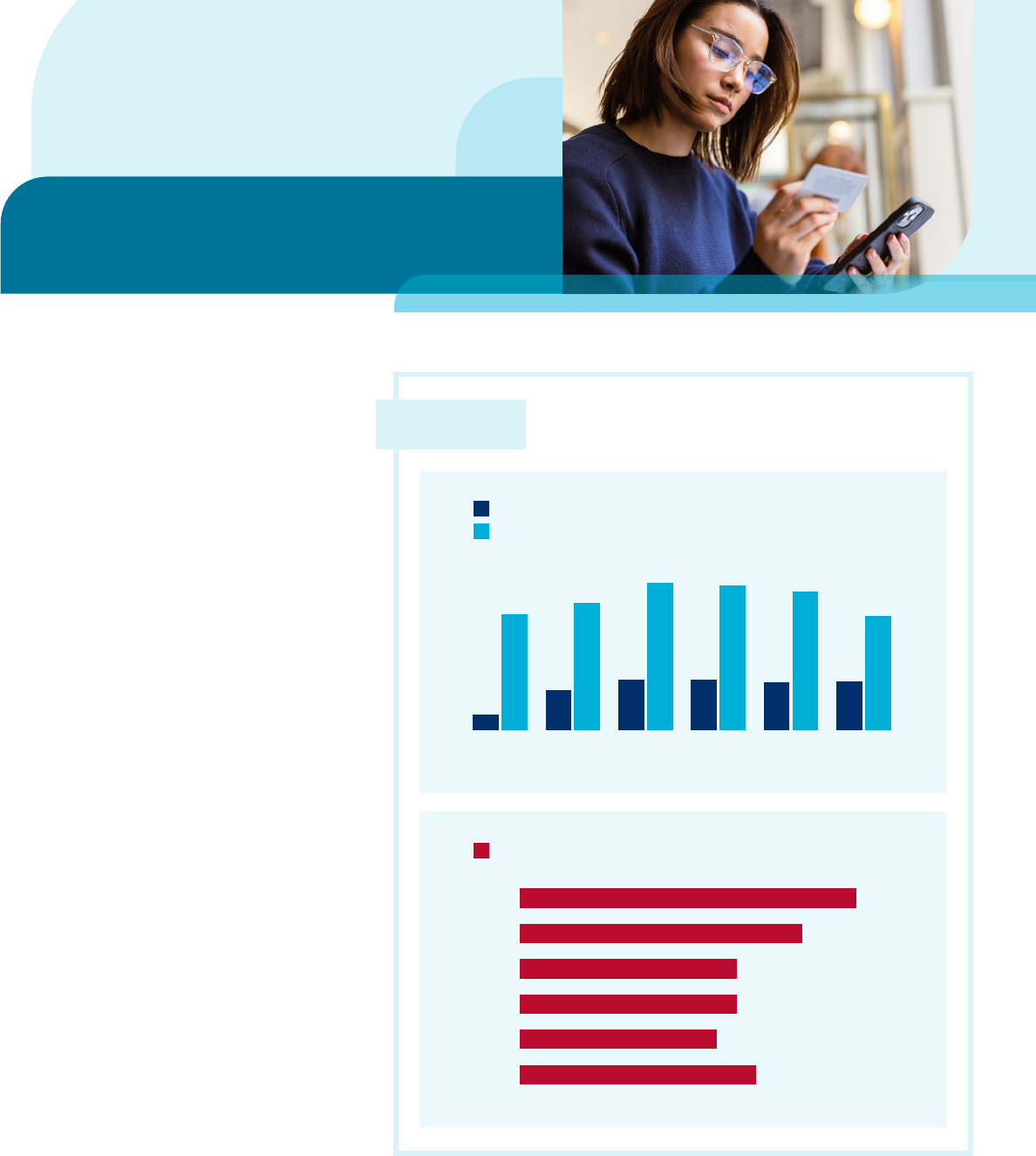
Demographics
Self-reported demographic data
provided through BBB Scam
Tracker combined with survey
research enables us to better
understand how risk varies
across different subgroups of
the population. BBB uses this
information to enhance how we
target outreach and educational
strategies aimed at empowering
consumers and businesses to
identify and avoid scams.
Age
For the second year in a row,
people ages 18–24 reported
a higher median dollar loss
($155) than all other age
groups (Figure 8). People ages
35–54 again submitted a higher
percentage of reports with a
monetary loss (susceptibility)
than other age groups; people
aged 65+ reported the lowest
susceptibility (44.9%).
Table 2 highlights the three
riskiest scam types by age.
Employment scams were the
riskiest scam type for ages 18–
44. Investment/cryptocurrency
scams were riskiest for those
aged 45+.
FIGURE 8
Exposure, susceptibility, and median dollar loss
by age (all scam types)
EXPOSURE
SUSCEPTIBILITY
MEDIAN $ LOSS
For the second year in a row, people ages
18–24 reported a higher median dollar
loss ($155) than all other age groups.
18–24
25–34
35–44
45–54
55–64
65+
6.1
%
16.0
%
20.1
%
19.8
%
18.8
%
19.2
%
45.6
%
50.1
%
58.2
%
57.0
%
54.6
%
44.9
%
18–24
25–34
35–44
45–54
55–64
65+
$
155
$
130
$
100
$
100
$
91
$
109
18 BBB.org/ScamTracker | 2023 BBB SCAM TRACKER RISK REPORT
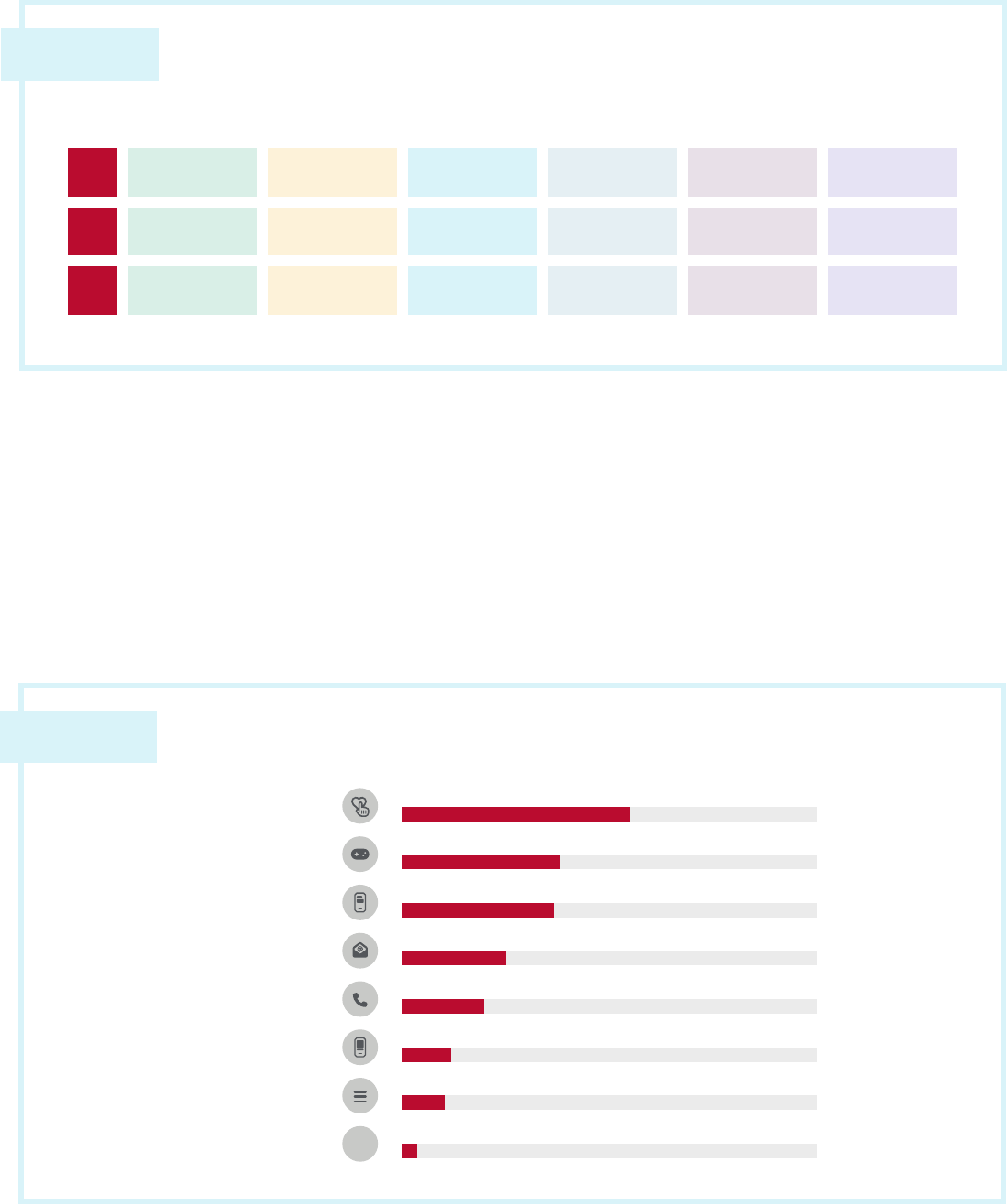
Scams targeting youth
BBB Scam Tracker does not collect information from people under the age of 18. However,
we know young people are being targeted. Of the 20.1% of survey respondents who
reported having children between the ages of seven and 18 years, 16.4% said their children
were targeted by scams. This was an increase from the 11.1% who said their children were
targeted in 2022. Respondents reported that their children were targeted via social media,
phone call, text message, gaming platform, email, and phone application (Figure 9).
FIGURE 9
Reported method of contact for youth
The totals do not add up to
100% because respondents
were encouraged to choose
all that applied.
When asked where they
were targeted by a scam,
respondents answered:
Social media
Gaming platform
Text message
Email
Phone call
Phone application
Other
None of the above
55.0
%
38.2
%
36.7
%
25.1
%
19.9
%
12.0
%
10.5
%
3.7
%
TABLE 2
Three riskiest scam types by age
18–24 25–34 35–44 45–54 55–64 65+
1
Employment Employment Employment
Investment/
cryptocurrency
Investment/
cryptocurrency
Investment/
cryptocurrency
2
Online
purchase
Investment/
cryptocurrency
Investment/
cryptocurrency
Employment
Online
purchase
Romance
3
Investment/
cryptocurrency
Online
purchase
Online
purchase
Online
purchase
Home
improvement
Home
improvement
19 BBB.org/ScamTracker | 2023 BBB SCAM TRACKER RISK REPORT
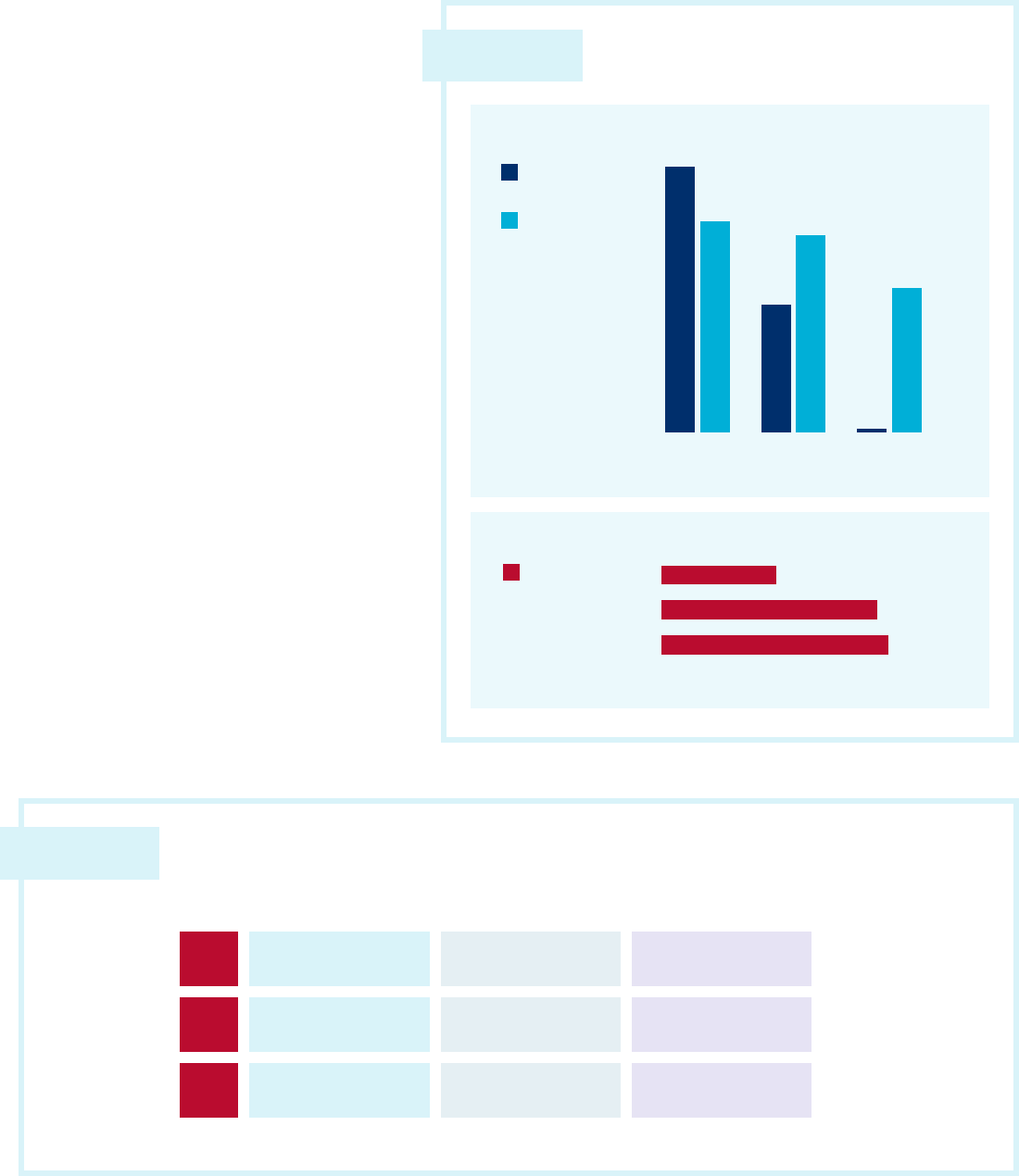
Gender
Similar to previous years, more
than two-thirds of reports to BBB
Scam Tracker were submitted by
women in 2023 (Figure 10). Females
reported being more susceptible
to losing money when exposed to a
scam (53.2%) compared to males
(49.8%) and non-binary people
(36.3%). The reported median dollar
loss was significantly lower for
females ($95) than for males ($178)
and non-binary people ($187).
The riskiest scam types by
gender shifted this year. In
2023, employment scams were
riskiest for females, investment/
cryptocurrency scams were riskiest
for males, and online purchase
scams were riskiest for non-binary
people (Table 3).
FIGURE 10
Exposure, susceptibility,
and median dollar loss by gender
EXPOSURE
SUSCEPTIBILITY
TABLE 3
Three riskiest scam types by gender
Female
Male
Non-binary
67.0
%
32.1
%
0.9
%
53.2
%
49.8
%
36.3
%
Female
Male
Non-binary
$
95
$
178
$
187
MEDIAN
$ LOSS
FEMALE MALE NON-BINARY
1
Employment
Investment/
cryptocurrency
Online purchase
2
Investment/
cryptocurrency
Employment Employment
3
Online purchase Home improvement
Phishing/
social engineering
20 BBB.org/ScamTracker | 2023 BBB SCAM TRACKER RISK REPORT

Contact and payment methods
The percentage
of people
who reported
engaging with
a scammer via
social media
rose 63.8% from
2022 to 2023.
Contact methods
The top three contact methods that resulted in a reported monetary loss in
2023 were social media (29.3%), website (28.9%), and email (18.5%)
(Figure 11). The percentage of people who said they were contacted via email
rose 31.8% from 2022 to 2023.
Impact of social media increases
The percentage of people who reported being contacted via social media
rose 63.8% from 2022 to 2023. The median dollar loss for social media
scams dropped from the year before, but susceptibility rose from 64.8% in
2022 to 80.2% in 2023.
Online scams continue to rise
Scams perpetrated online increased from 56.5% in 2022 to 68.4% in 2023.
As in previous years, scams perpetrated online were more likely to result in a
monetary loss than were those perpetrated in person or via phone (Figure 12).
Figure 13 breaks out age range and contact method. Older people were more
likely to report losing money when they were targeted by phone or online
classifieds. Younger people were more likely to report losing money when
they were targeted by text message or internet messaging.
Online purchase scams were the most reported scam type in which the
person reported engaging with a scammer via website, social media, email,
internet messaging, and online classifieds (Table 4).
21 BBB.org/ScamTracker | 2023 BBB SCAM TRACKER RISK REPORT
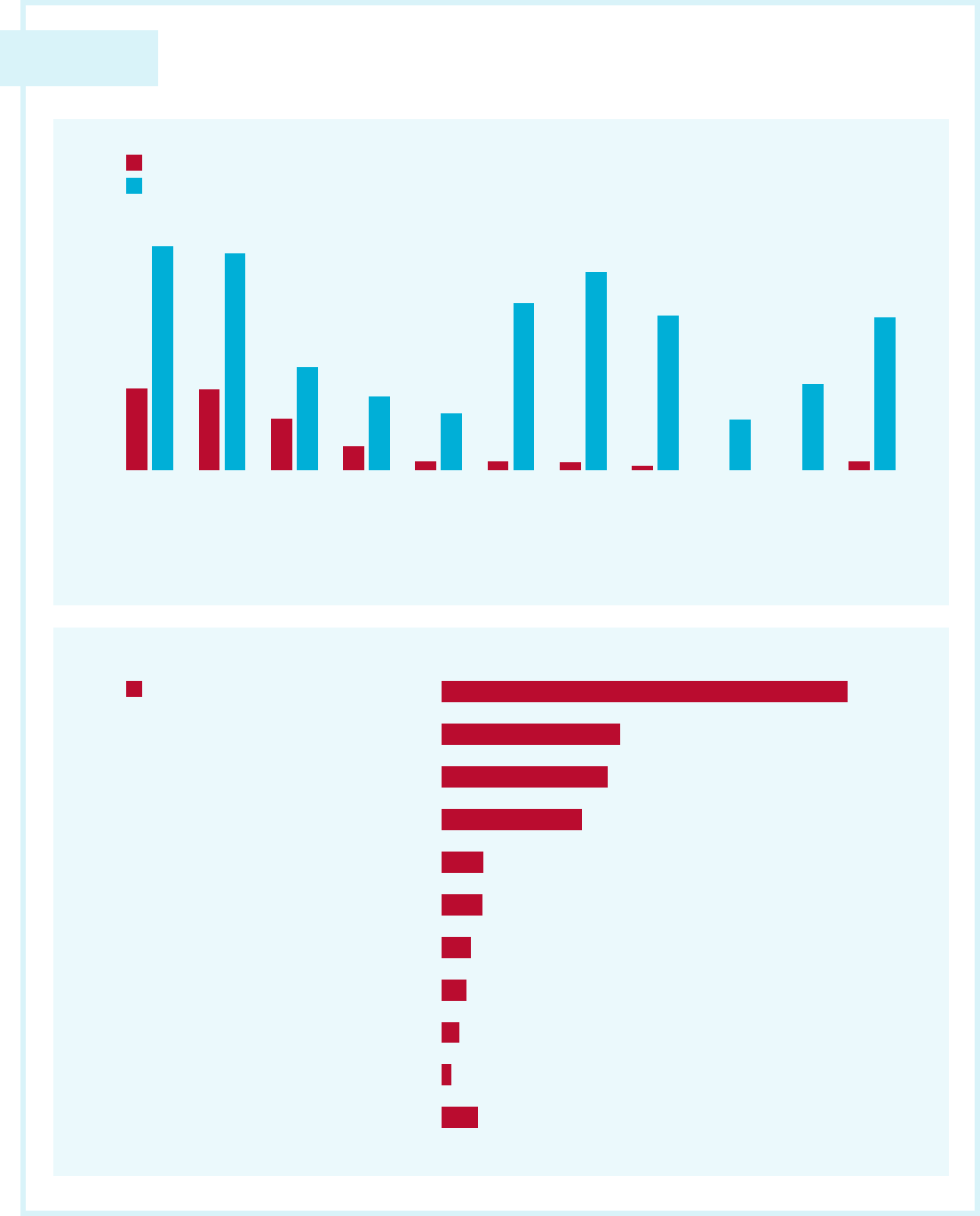
FIGURE 11
Method of contact with a monetary loss
29.3
%
28.9
%
18.5
%
8.7
%
3.3
%
3.0
%
2.7
%
1.5
%
0.0
%
0.0
%
3.2
%
80.2
%
77.8
%
36.8
%
26.4
%
20.3
%
59.9
%
71.2
%
55.5
%
18.1
%
30.8
%
54.8
%
$
1,480
$
650
$
604
$
509
$
150
$
148
$
107
$
90
$
65
$
34
$
133
PERCENTAGE OF TOTAL SCAMS WITH A LOSS BY CONTACT METHOD
SUSCEPTIBILITY
OtherPostal
mail
FaxOnline
classifieds
(e.g.,
Craigslist)
In
person
Internet
messaging
(e.g.,
WhatsApp)
Text
message
Phone
call
EmailWebsiteSocial
media
(e.g.,
Facebook)
MEDIAN $ LOSS
In person
Other
Postal mail
Social media
(e.g., Facebook)
Website
Email
Fax
Online classifieds
(e.g., Craigslist)
Text message
Phone call
Internet messaging
(e.g., WhatsApp)
These figures do not add up to 100% because data that was 'not applicable' was not included.
22 BBB.org/ScamTracker | 2023 BBB SCAM TRACKER RISK REPORT
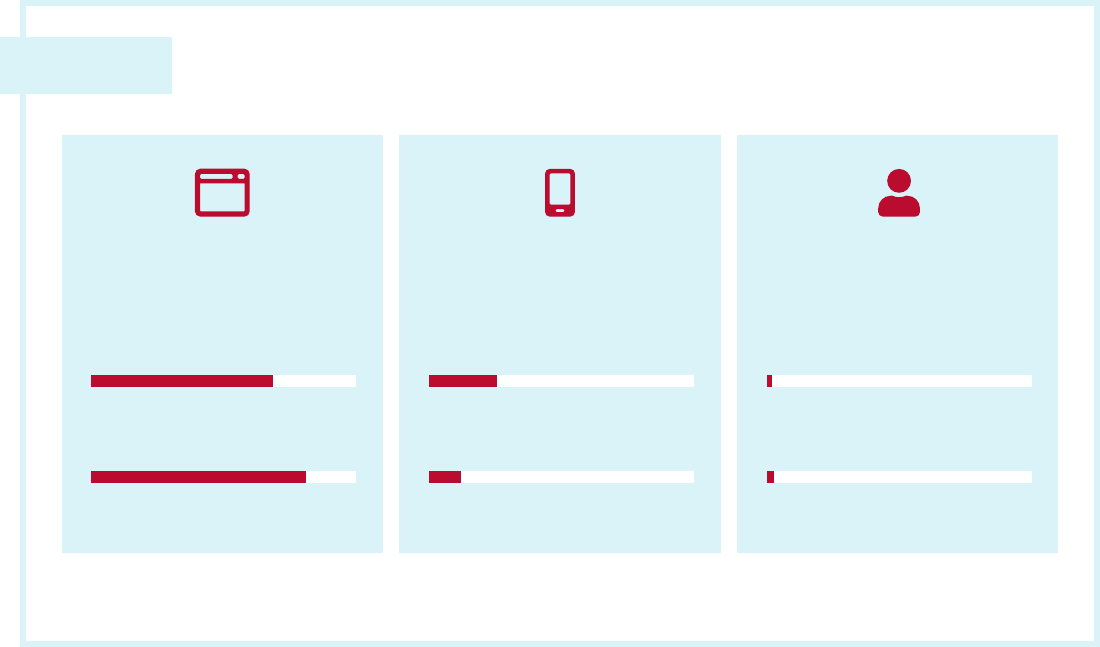
FIGURE 12
All scams compared to scams with a reported monetary loss
by means of contact
Phone
(includes phone
and text messaging)
Online
(includes website, social media,
email, internet messaging,
and online classifieds)
In person
(includes in person
and postal mail)
Percentage of all scams and scams with a $ loss do not add up to 100% because the "other" category was not included.
of all scams reported
81.2
%
68.4
%
12.0
%
25.6
%
2.7
%
1.9
%
of all scams reported with a $ loss
of all scams reported
of all scams reported with a $ lossof all scams reported with a $ loss
of all scams reported
23 BBB.org/ScamTracker | 2023 BBB SCAM TRACKER RISK REPORT
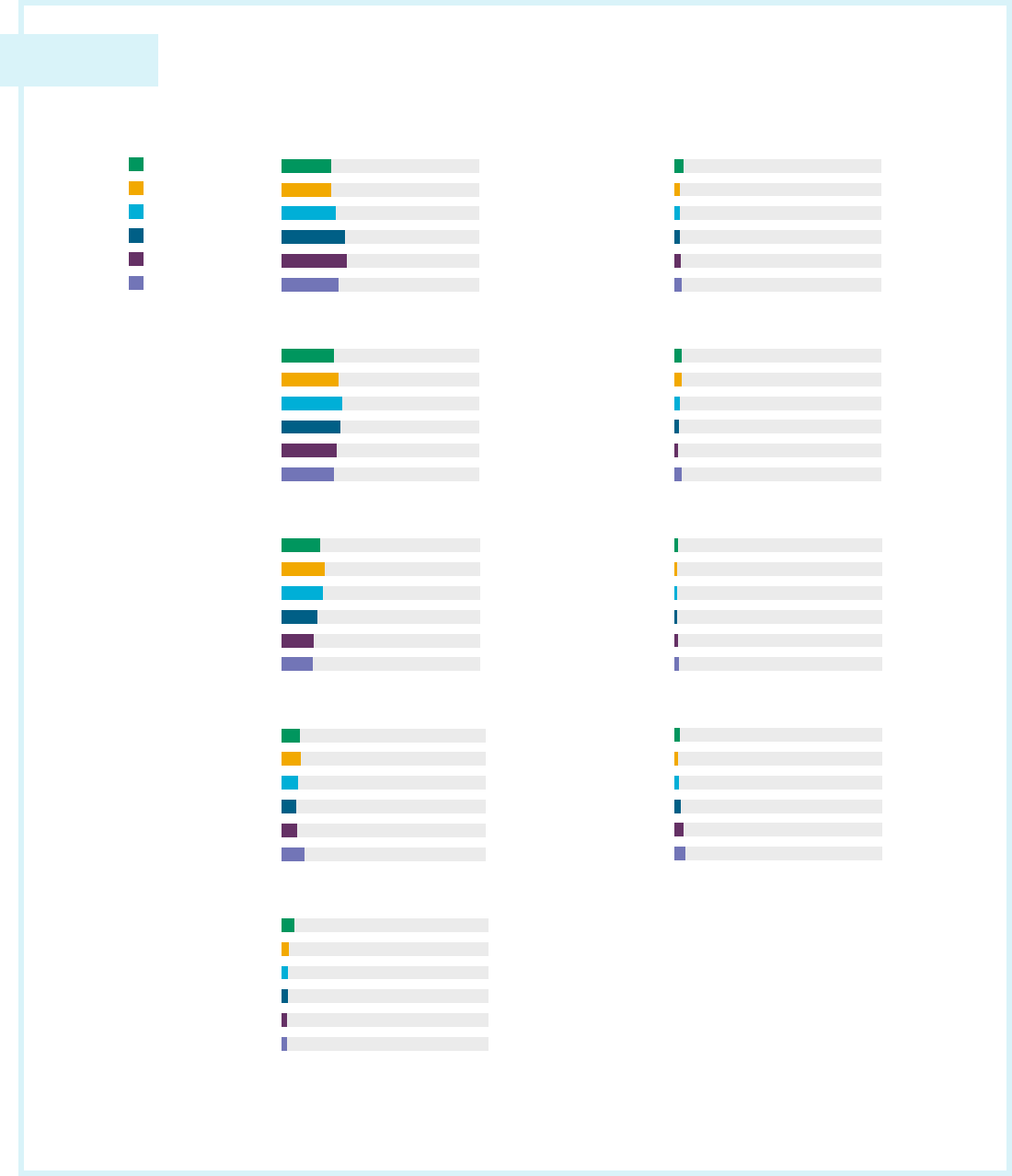
FIGURE 13
Contact method by age (reports with a monetary loss)
25.0
%
25.4
%
27.6
%
32.2
%
33.1
%
29.0
%
Social media
26.5
%
28.7
%
30.9
%
29.6
%
28.2
%
26.4
%
Website
6.2
%
3.8
%
3.1
%
3.2
%
3.0
%
2.7
%
Text message
9.2
%
9.8
%
8.1
%
7.3
%
7.7
%
11.4
%
Phone call
19.6
%
21.8
%
20.9
%
18.1
%
16.3
%
15.7
%
Email
4.5
%
2.8
%
2.7
%
2.6
%
3.2
%
3.3
%
Internet messaging
1.7
%
1.2
%
1.1
%
1.3
%
1.6
%
2.2
%
Online classifieds
3.6
%
3.7
%
2.6
%
2.0
%
1.9
%
3.3
%
In person
2.5
%
1.9
%
2.2
%
2.9
%
4.2
%
5.1
%
Other
18–24
25–34
35–44
45–54
55–64
65+
Contact methods with insignificant responses are not shown.
24 BBB.org/ScamTracker | 2023 BBB SCAM TRACKER RISK REPORT
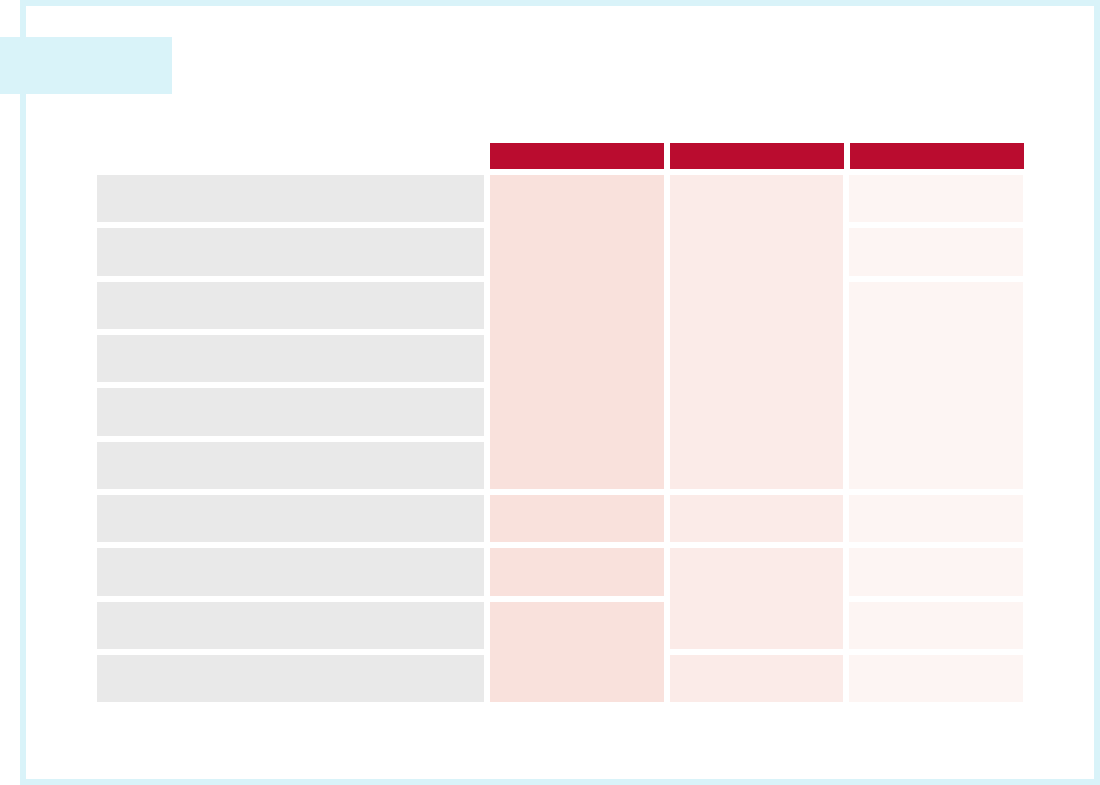
TABLE 4
Most reported scam types by contact method
Website
Online purchase Employment
Counterfeit
product
Internet messaging (e.g., WhatsApp)
Investment/
cryptocurrency
Social media
Phishing/social
engineering
Online classified (e.g., Craigslist)
Email
Fax
Text message Employment
Phishing/social
engineering
Online purchase
In person
Home
improvement
Online purchase
Counterfeit
product
Phone call
Phishing/social
engineering
Debt collection
Postal mail
Sweepstakes/
lottery/prizes
Fake check/
money order
CONTACT METHOD
#
1
#
2
#
3
Payment method
In 2023, credit cards (41.9%) remained the top reported payment method with a
monetary loss (Figure 14), followed by bank account debit (21.8%) and online payment
system (17.5%). Interestingly, reports of bank account debit with a loss increased 66.4%,
while reports of online payment system with a loss decreased 30.8% from 2022 to 2023.
Prepaid (gift) card scams with a loss decreased from 5.0% in 2022 to 3.2% in 2023.
Payment methods with the highest median dollar loss were wire transfer ($8,000),
cryptocurrency ($3,300), and check ($2,625). The reported median dollar loss for these
payment methods rose significantly from the year before.
When monetary loss is broken out by age and payment method (Figure 15), older people
were more likely to report a monetary loss via credit card, prepaid/gift card, and check.
Younger people were more likely to report a monetary loss via online payment system
and bank account debit.
25 BBB.org/ScamTracker | 2023 BBB SCAM TRACKER RISK REPORT

FIGURE 14
Payment method with a reported monetary loss
0
%
50
%
41.9
%
21.8
%
17.5
%
3.2
%
3.0
%
2.3
%
2.2
%
1.8
%
0.3
%
6.0
%
$
0
$
8,500
$
65
$
75
$
200
$
512
$
3,300
$
2,625
$
1,000
$
8,000
$
1,875
$
500
Wire transfer
(e.g., Western Union)
Money order
Other
Cash
Check
Cryptocurrency
Prepaid card
(e.g., gift card)
Online
payment system
Bank account debit
Credit card
Online purchase scams were the most reported scam type for several payment methods
(credit card, online payment system, bank account debit, prepaid card, wire transfer,
money order) (Table 5).
PERCENTAGE OF ALL SCAMS WITH
$ LOSS BY PAYMENT METHOD
MEDIAN $ LOSS
BY PAYMENT METHOD
26 BBB.org/ScamTracker | 2023 BBB SCAM TRACKER RISK REPORT
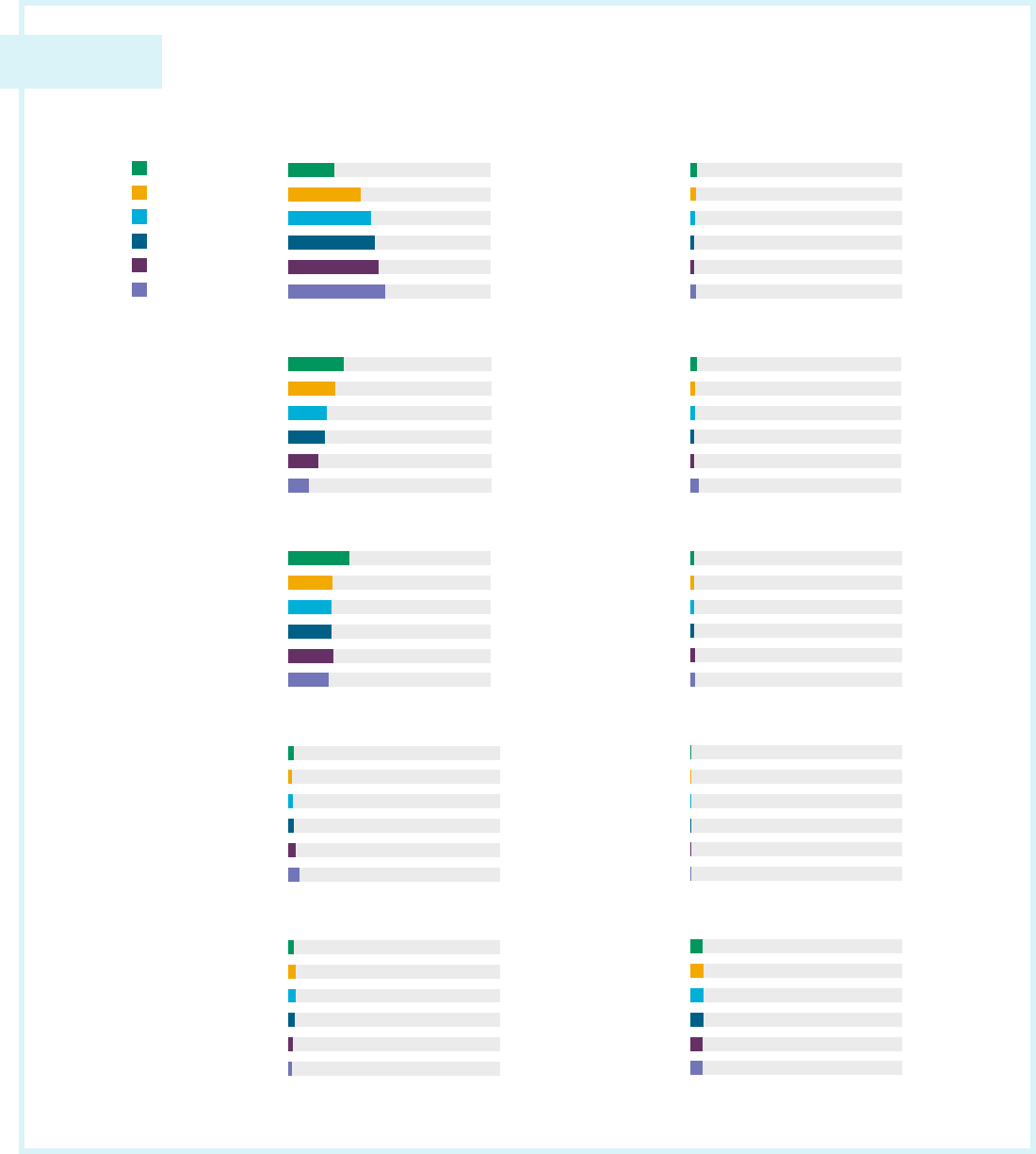
FIGURE 15
Payment method by age (reports with a monetary loss)
23.0
%
36.0
%
41.1
%
42.8
%
44.6
%
47.8
%
Credit card
27.5
%
23.3
%
18.9
%
18.1
%
14.9
%
10.5
%
Online payment system
2.6
%
3.9
%
3.8
%
3.4
%
2.3
%
1.7
%
Cryptocurrency
2.9
%
1.9
%
2.5
%
2.7
%
3.7
%
5.5
%
Prepaid card
2.9
%
2.1
%
2.1
%
1.7
%
1.9
%
4.0
%
Check
30.3
%
22.0
%
21.7
%
21.3
%
22.6
%
20.0
%
Bank account debit
3.0
%
2.8
%
2.0
%
1.9
%
1.9
%
2.4
%
Cash
0.2
%
0.3
%
0.2
%
0.2
%
0.3
%
0.4
%
Money order
1.8
%
1.6
%
1.8
%
1.6
%
2.0
%
2.2
%
Wire transfer
5.9
%
6.2
%
6.1
%
6.3
%
5.8
%
5.6
%
Other
18–24
25–34
35–44
45–54
55–64
65+
27 BBB.org/ScamTracker | 2023 BBB SCAM TRACKER RISK REPORT
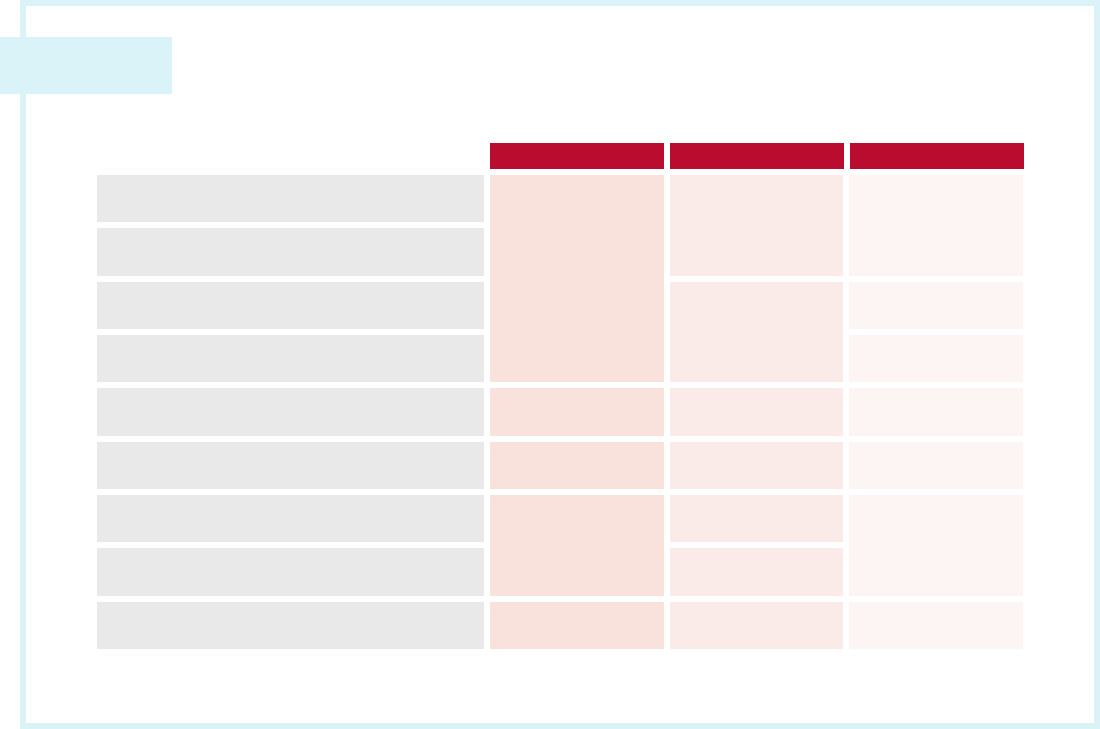
TABLE 5
Most reported scam type by payment method
Credit card
Online purchase
Counterfeit
product
Phishing/social
engineering
Online payment system
Bank account debit
Phishing/social
engineering
Employment
Prepaid card Advance fee loan
Cryptocurrency
Investment/
cryptocurrency
Online purchase Employment
Check Employment
Home
improvement
Online purchase
Wire transfer
Online purchase
Investment/
cryptocurrency
Advance fee loan
Money order Employment
Cash
Home
improvement
Online purchase Employment
CONTACT METHOD
#
1
#
2
#
3
28 BBB.org/ScamTracker | 2023 BBB SCAM TRACKER RISK REPORT

Impact on specific audiences
Canadian consumers
In 2023, Canadian consumers reported 2,104 scams to BBB Scam Tracker (3.2% of total
reports submitted in both the United States and Canada). The overall median dollar loss
reported in 2023 was $300 CAD, the same overall median dollar loss reported in 2022.
The percentage of those who reported losing money after being targeted by a scam
(susceptibility) increased from 46.9% in 2022 to 61.1% in 2023.
The top three riskiest scams reported in Canada shifted in 2023. This year, we combined
two scam types (cryptocurrency and investment) into one category because the majority
of cryptocurrency scams involve investment scenarios. Investment/cryptocurrency
scams rose to be the No. 1 riskiest scam, with a high median dollar loss ($9,365 CAD).
More than 82% of those who reported being targeted by investment/cryptocurrency
scams lost money (Table 6).
Employment scams rose from fifth riskiest to second riskiest, with a median dollar loss
of $3,600 CAD. Home improvement scams, the third riskiest, had a median dollar loss of
$2,000 CAD and a high percentage of reports with a dollar loss (84.1%). You can view the
full Canada Risk Report at BBBMarketplaceTrust.org/CanadaRiskReport.
TABLE 6
Top three riskiest scams in Canada
RANK SCAM TYPE
BBB RISK
INDEX
EXPOSURE* SUSCEPTIBILITY MEDIAN $ LOSS
1
Investment/
cryptocurrency
1127.6 4.4% 82.6% $9,365 CAD
2
Employment 484.8 15.6% 25.8% $3,600 CAD
3
Home
improvement
469.0 8.4% 84.1% $2,000 CAD
* Exposure is limited by the nature of self-reporting; the percentage of those who reported to BBB Scam Tracker does not necessarily
match the percentage of people in the full population who were targeted by scams.
29 BBB.org/ScamTracker | 2023 BBB SCAM TRACKER RISK REPORT

Impersonated organizations
By pretending to be well-known companies,
government agencies, or organizations,
scammers seek to co-opt the trust and
authority of these brands. In some cases,
scammers impersonate real-life individuals.
In 2023, the U.S. Postal Service rose to the top
of our list of most-impersonated organizations
reported to BBB Scam Tracker (Table 7).
The agency switched places with Amazon,
which fell to No. 2 on the list. About 58% of
U.S. Postal Service impersonation reports
were phishing scams. For Amazon, 43% of
impersonation reports were phishing scams,
17% were online purchase scams, and 10%
were employment scams.
Many of the same organizations from 2022
remain on this year’s list. Better Business
Bureau moved into the top 15 impersonated
organizations this year. Mentions of “warranty
department” and the “U.S. Business
Regulations Department” were also reported,
but not included on the list because the
references could not be connected to one
specific organization.
TABLE 7
Top 20 organizations/individuals
used for impersonation
Rank Organization/individual name
No. of
reports
1
U.S. Postal Service 804
2
Amazon 606
3
Publishers Clearing House 536
4
Geek Squad 430
5
Norton 387
6
PayPal 384
7
Microsoft 206
8
Walmart 198
9
Facebook 189
10
McAfee 188
11
Better Business Bureau 184
12
Bed Bath & Beyond 178
13
IRS 162
14
Medicare 154
15
Advance America 136
16
Macy’s 134
17
Spectrum 114
18
Best Buy 104
19
Capital One 98
20
Lending Club 95
30 BBB.org/ScamTracker | 2023 BBB SCAM TRACKER RISK REPORT

FIGURE 16
"Carrot" versus "Stick" tactics by exposure,
susceptibility, and median dollar loss
Carrot versus stick: Analyzing
the impact of scam tactics
Scammers use a wide variety
of tactics to perpetrate their
scams, some of which are
more effective than others.
Some tactics use the promise
of an opportunity (“carrot”)
to encourage the target to
continue the engagement.
Examples of the carrot
approach include the chance to
make quick money through low-
risk investments or too-good-
to-be-true job offers. Other
tactics utilize a threat (“stick”) or
negative situation to manipulate
the targets, such as jail time for
back taxes or news that a loved
one is in trouble and needs help.
This year’s report breaks out the
various scam types into three
categories: carrot method, stick
method, and other (scam types
that do not easily fit into
a category).
Carrot scams: Advance fee loan,
investment/cryptocurrency, fake
check/money order, credit repair/
debt relief, employment, counterfeit
product, government grant, home
improvement, sweepstakes/lottery/
prizes, charity, foreign money
exchange, rental, romance, vanity
award, travel/vacation/timeshare,
online purchase, COVID-19, Yellow
Pages/directories, and worthless
problem-solving service.
Stick scams: Debt collection,
tax collection, business email
compromise, family/friend
emergency, government agency
imposter, fake invoice/supplier bill,
tech support, and utility.
“Other” scams that don’t easily
qualify as carrot or stick: Phishing,
bank/credit card company imposter,
identify theft, credit card, moving,
and healthcare/Medicaid/Medicare.
Scams targeting both consumers and businesses were included in
this analysis. The breakdown of scam types includes the following:
EXPOSURE
SUSCEPTIBILITY
Carrot
Stick
Other
68.7
%
7.2
%
23.8
%
63.2
%
19.5
%
91.8
%
Carrot
Stick
Other
$
96
$
400
$
270
These figures do not add up to 100% because data
that was 'not applicable' was not included.
MEDIAN $ LOSS
31 BBB.org/ScamTracker | 2023 BBB SCAM TRACKER RISK REPORT
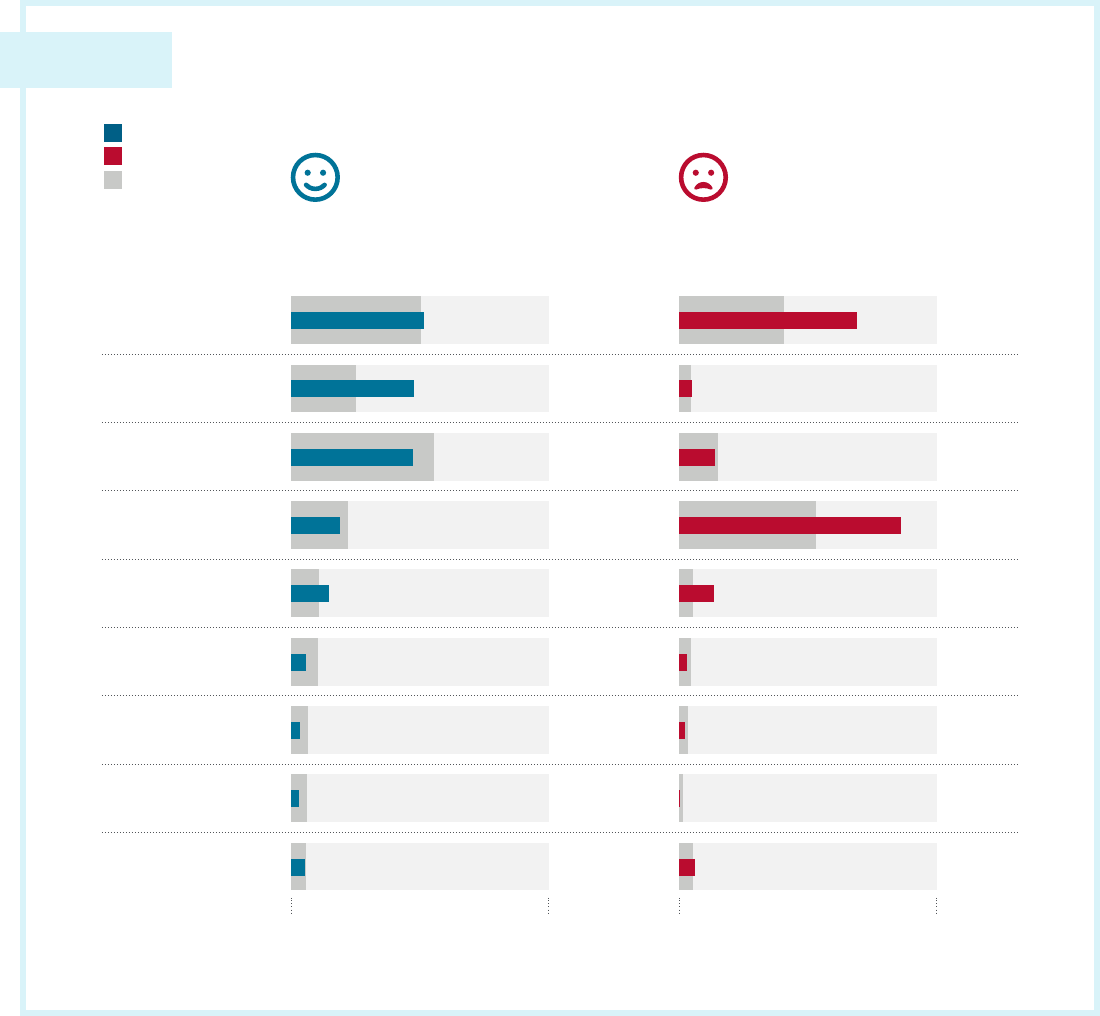
FIGURE 17
Contact method by carrot or stick method
These figures do not add up to 100% because data that was "not applicable" was not included.
Carrot-type scam tactics
by contact method
Stick-type scam tactics
by contact method
0% 50%
0% 50%
25.2
%
12.6
%
27.6
%
11.0
%
5.4
%
5.2
%
3.3
%
3.2
%
2.9
%
20.3
%
2.4
%
7.5
%
26.6
%
2.7
%
2.4
%
1.8
%
0.8
%
2.7
%
25.7
%
23.9
%
23.7
%
9.4
%
7.4
%
3.0
%
1.8
%
1.6
%
2.8
%
34.4
%
2.5
%
7.0
%
43.0
%
6.8
%
1.6
%
1.1
%
0.2
%
3.1
%
Email
Other
Online classifieds
In person
Internet messaging
Text message
Phone call
Website
Social media
2023 carrot
2023 stick
2022
Using the BBB Risk Index, we found that people were much more likely to report losing
money to scams perpetrated via a carrot method (63.2%) compared to a stick method
(19.5%) (Figure 16). However, when people reported losing money to scams that were
perpetrated with a stick method, they reported losing significantly more money ($400)
than those who reported losing money to carrot-type scams ($96).
Carrot-type tactics were more likely to use social media or websites to target people.
Stick-type tactics were more likely to target people via phone (Figure 17). Interestingly,
carrot-type tactics via social media rose from 12.6% in 2022 to 23.9% in 2023.
32 BBB.org/ScamTracker | 2023 BBB SCAM TRACKER RISK REPORT

Self-reported cues and behaviors that
helped people avoid losing money
Factors people say helped them avoid losing money
Our team asked survey respondents again this year what they believe helped them avoid
losing money when targeted by a scam (Figure 18). Of those surveyed who submitted a scam
report in 2023, 52.1% said they avoided losing money to a scam because they “felt something
wasn’t right about the situation.”
Other top cues/behaviors included researching the type of scam/offer (21.4%), researching
the background of the scammer (17.9%), and knowing about the methods and behaviors of
scammers in general (17.7%).
FIGURE 18
Cues/behaviors respondents say helped them avoid losing money
The percentages do not add up to 100% because respondents were encouraged to choose more than one answer.
52.1
%
21.4
%
17.9
%
17.7
%
14.4
%
10.4
%
8.8
%
7.5
%
7.5
%
6.7
%
35.1
%
Felt something wasn’t right about
the situation
Researched the type of scam/offer
that targeted me
Researched the background
of the scammer
Knew about the methods and behaviors
of scammers in general
Reached out to BBB or another
fraud-fighting organization for advice
Read about a similar scam on
BBB Scam Tracker
Warned about the possible scam
by an app, service, or security features
Reached out to family/friend for advice
Somebody intervened to stop the transaction
(financial organization or a retail employee)
Knew about the particular type of scam
Other
33 BBB.org/ScamTracker | 2023 BBB SCAM TRACKER RISK REPORT

Other factors that may
impact victimization
Repeat victimization
When we asked survey respondents to self-report on how many times they had lost
money to a scam, 10.3% reported losing money at least three times, up from 8.4% in
2022 (Figure 19). Twenty-nine percent reported losing money two or more times (up
from 23.5% in 2022).
FIGURE 19
Number of times a person reported losing money to a scam
41.8
%
18.7
%
6.7
%
1.5
%
2.1
%
29.2
%
1 time
2 times
3 times
4 times
5+ times
I have not lost
money to a scam
34 BBB.org/ScamTracker | 2023 BBB SCAM TRACKER RISK REPORT
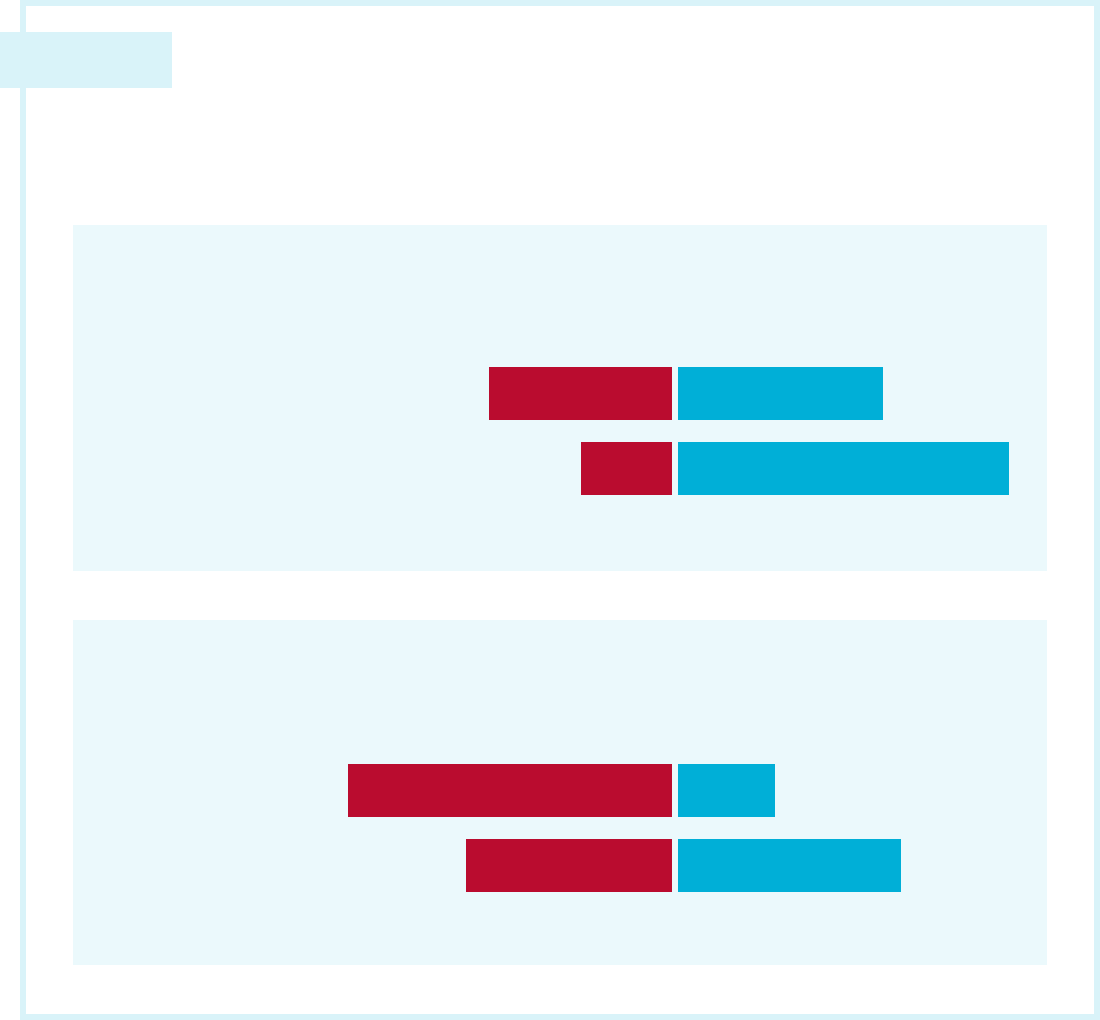
Survey respondents who reported losing money to a scam three or more times were
more likely to report that they experienced significant financial distress during the past
year. Those who reported losing money three or more times were also more likely to say
they are isolated (live alone or have few friends) (Figure 20).
FIGURE 20
Factors that may impact repeat victimization
I was under financial stress.
I am isolated (I live alone or
I have few close friends).
60.9
%
38.9
%
18.7
%
42.2
%
RESPONDENTS WHO LOST MONEY
3 OR MORE TIMES SAID:
AGREE DISAGREE
AGREE DISAGREE
I was under financial stress.
I am isolated (I live alone or
I have few close friends).
RESPONDENTS WHO DID NOT
LOSE MONEY SAID:
34.6
%
17.5
%
38.7
%
62.3
%
When asked whether they agreed or disagreed with factors
describing their experience while being targeted by a scam:
35 BBB.org/ScamTracker | 2023 BBB SCAM TRACKER RISK REPORT
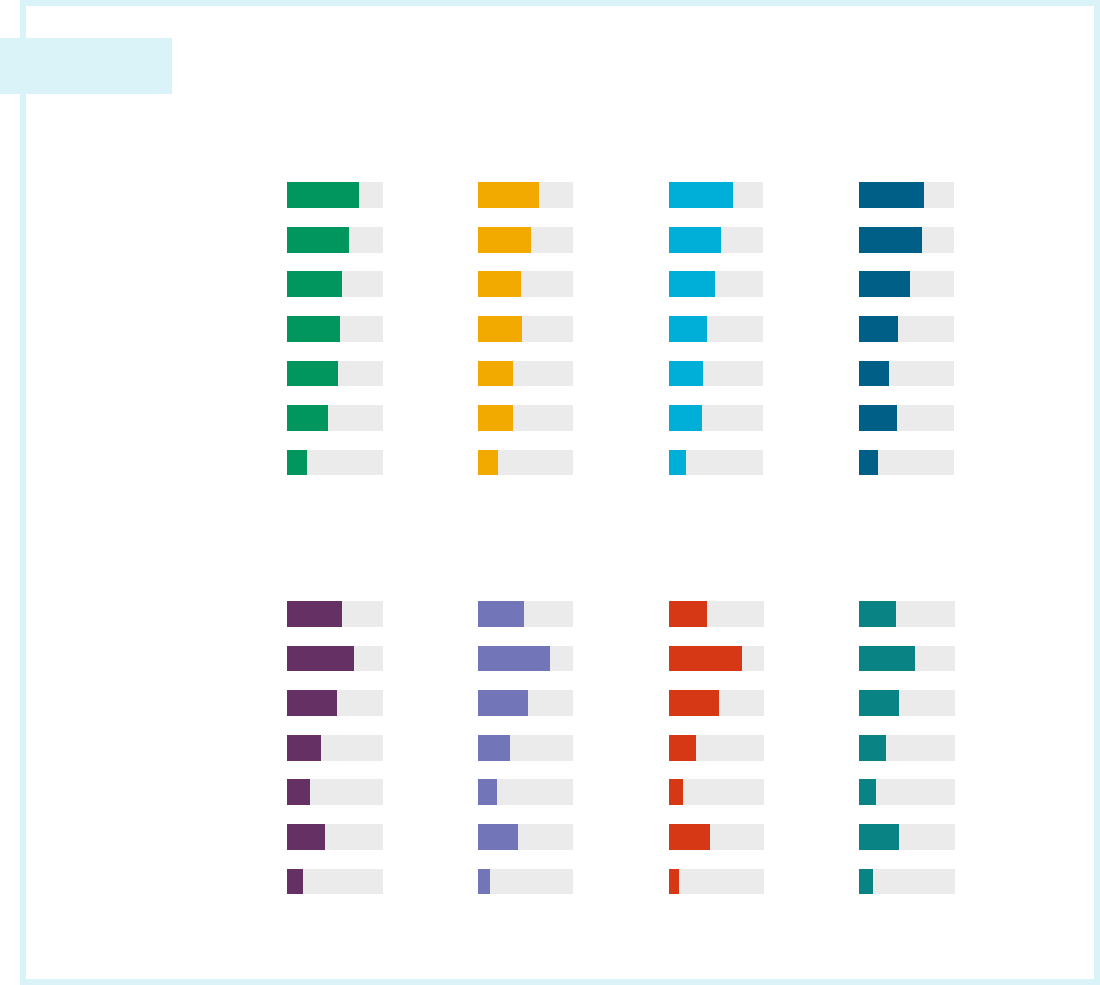
Preferred consumer education resources
We asked survey respondents to tell us how they prefer to receive information about
scam prevention (Figure 21). People between the ages of 18 and 54 chose social media
as their top source of scam education information. People over the age of 55 said they
preferred scam alerts.
FIGURE 21
Preferred scam education resources by age
Social media stories
Scam alert articles
TV news
Scam detection
training
Online videos
Consumer
education email
Radio programs
Social media stories
Scam alert articles
TV news
Scam detection
training
Online videos
Consumer
education email
Radio programs
74.8
%
65.1
%
57.3
%
55.3
%
53.4
%
42.7
%
20.4
%
18–24
64.4
%
56.5
%
45.6
%
46.0
%
37.4
%
36.7
%
20.9
%
25–34
67.7
%
55.4
%
48.9
%
39.9
%
36.0
%
34.7
%
18.2
%
35–44
67.9
%
66.4
%
53.1
%
41.1
%
31.2
%
39.6
%
19.4
%
45–54
57.8
%
69.5
%
51.7
%
35.8
%
24.2
%
39.7
%
16.3
%
55–64
49.0
%
75.6
%
52.4
%
33.9
%
19.9
%
41.9
%
12.9
%
65–74
40.6
%
77.3
%
53.3
%
28.9
%
15.3
%
43.8
%
10.4
%
75–84
37.9
%
58.6
%
41.4
%
27.6
%
17.2
%
41.4
%
13.8
%
85+
36 BBB.org/ScamTracker | 2023 BBB SCAM TRACKER RISK REPORT

Other scam tactics
We asked people who reported to BBB Scam Tracker to tell us about other tactics
scammers used to engage with them (Figure 22). Clicking on a link in an email or text
message was the top reported tactic, followed by sending money via an online payment
system (digital payment app).
FIGURE 22
Scammer tactics
20.3
%
15.9
%
8.0
%
8.8
%
6.7
%
4.8
%
3.5
%
55.1
%
14.0
%
19.3
%
8.4
%
4.6
%
5.5
%
5.7
%
4.2
%
60.2
%
Click on a link
(via email, text, etc.)
Send money via
a digital payment app
Go to a store to
purchase gift cards
Deposit a check
into your bank account
Share a one-time code
you received
Purchase
cryptocurrency
Submit cash to
a Bitcoin ATM
None of the above
18.1
%
15.7
%
7.6
%
7.5
%
5.7
%
4.3
%
3.2
%
57.8
%
TACTIC RESPONDENTS WHO DID NOT LOSE $
RESPONDENTS WHO LOST $
PERCENT OF ALL
SCAM REPORTS
When asked, “At any point during your interaction with the scammer(s),
were you asked to do any of the following?” survey respondents
selected all scammer tactics that applied.
The totals do not add up to 100% because respondents could choose more than one option.
37 BBB.org/ScamTracker | 2023 BBB SCAM TRACKER RISK REPORT
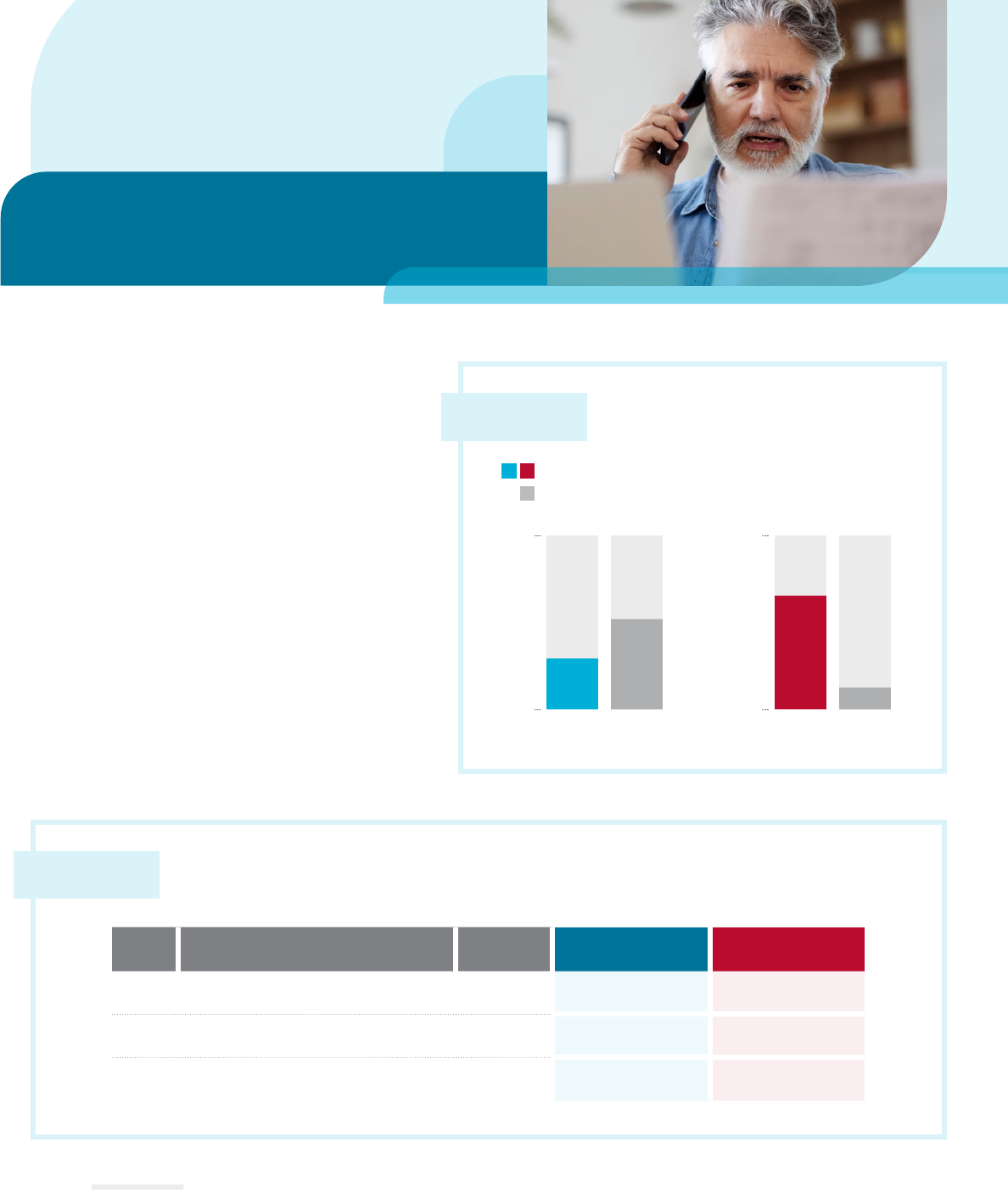
Scams targeting businesses
9
Sometimes scammers claim to be able to provide low-cost solutions to problems they know many businesses have. For example,
they might claim they can repair the business’s online reputation or provide quick relief if it’s struggling with debt or back taxes—for
an up-front fee, of course.
BBB Scam Tracker also collects
information about scams that target
businesses. Businesses reported losing
money 29.5% of the time, a significantly
lower susceptibility than that reported by
consumers (52.0%). However, the overall
median dollar loss reported by businesses
($523) was significantly higher than that
reported by consumers ($100) (Figure 23).
The three riskiest business scams based
on the BBB Risk Index were worthless
problem-solving service scams,
9
bank/
credit card company imposter scams, and
fake invoice/supplier bill scams (Table 8).
TABLE 8
Riskiest scam types reported by businesses
RANK SCAM TYPE
BBB RISK
INDEX
SUSCEPTIBILITY MEDIAN $ LOSS
1
Worthless problem-solving service 175.1 59.8% $500
2
Bank/credit card company imposter 111.6 28.0% $983
3
Fake invoice/supplier bill 36.7 11.9% $413
FIGURE 23
Overall susceptibility and
monetary loss (business versus
consumer scams)
0
%
100
%
29.5
%
52.0
%
$
0
$
800
$
523
$
100
SUSCEPTIBILITY MEDIAN $ LOSS
Business
Consumer
38 BBB.org/ScamTracker | 2023 BBB SCAM TRACKER RISK REPORT

BBB.org/AvoidScams
BBB.org/ScamTips
For more about scams targeting businesses:
BBB.org/all/business-scams
1
Avoid making quick
purchases while
browsing social media.
Reports of scams being
perpetrated via social
media increased 63.8%
from 2022 to 2023.
Take time to research
the website that is
offering that amazing
deal to make sure it
isn't fake.
2
Be very cautious
engaging with
someone you’ve
met online.
Make sure you don’t
share personal details
with somebody you
haven’t met in person.
If they begin to ask for
money or offer a no-risk
investment opportunity,
it’s a red flag.
3
Don’t click on links
or open attachments
in unsolicited email
or text messages.
If the person claims
to be somebody you
know or a well-known
organization, contact
the person directly or go
directly to your account
to confirm the details.
Impersonation was
reported as the most
common tactic used to
perpetrate scams.
4
Don’t believe
everything you see
or read. Scammers
are great at mimicking
official seals, fonts,
and other details. Just
because a website or
email looks official does
not mean it is. Even
Caller ID can be faked.
5
Take precautions
when making online
purchases.
Don’t shop based on
price alone. Scammers
offer hard-to-find
products at great
prices.
Don’t buy online unless
the transaction is
secure. Make sure the
website has “https”
in the URL (the “s” is
for “secure”) and a
small lock icon on the
address bar. However,
even secure websites
can be fraudulent.
Do more research on
the products and the
business before you
make the purchase.
6
Know general red
flags of scams:
The offer sounds too
good to be true.
The person insists you
must act immediately,
or the deal ends soon.
Somebody asks you to
deposit money into a
Bitcoin ATM or sends
a check and asks you
to deposit it and then
transfer the funds.
They require an up-
front payment before a
service is provided.
7
Never disclose
personally
identifiable
information to an
unsolicited contact.
If somebody asks you
to share your SSN/SIN
or your driver’s license
number, consider it a
red flag and proceed
with caution.
8
Take your time. Don’t
be pressured to act
immediately. Instead,
do your research or
discuss the situation
with a third party.
9
Use secure, traceable
transactions when
making payments for
goods, services, taxes,
and debts. Prepaid/
gift cards, for example,
cannot be traced.
They are intended to
be used as gifts, not as
payment.
10
Whenever possible,
work with businesses
that have proper
identification,
licensing, and
insurance. Research
the company first at
BBB.org.
10 GENERAL TIPS
FOR AVOIDING A SCAM
These tips can help you avoid most scams
and protect yourself and your family.
Learn more about
avoiding scams at:
39 BBB.org/ScamTracker | 2023 BBB SCAM TRACKER RISK REPORT

BBB Institute
for Marketplace Trust
The BBB Scam Tracker Risk Report is published each year by the BBB Institute
for Marketplace Trust (BBB Institute), the charitable arm of the Better Business
Bureau. Our mission is to educate and protect consumers, establish best
practices for businesses, and solve complex marketplace problems. Our
consumer educational programs, which include a wide array of resources
on fraud prevention and education, are delivered digitally and in person
through the network of BBBs serving communities across the United States
and Canada. Research is an integral component of our work, enabling us to
incorporate the latest scammer trends in our consumer education resources
and initiatives. You can find more information about BBB Institute and its
programs at BBBMarketplaceTrust.org.
Scam Prevention Guide
In 2023, BBB Institute introduced a new microsite aimed at helping people gain
the knowledge they need to spot and avoid scams. The guide includes quizzes,
videos, a library of materials, and a Risk Calculator that helps users understand
the types of scams that pose the biggest risk to their demographic profile
(age, gender, country, military status). You can find the guide at
BBB.org/scamprevention.
Scam Survival Toolkit
We also introduced a test version of a new online resource for scam victims. Built
with support provided by Amazon and Capital One, the Scam Survival Toolkit connects
scam victims with the resources they need to restore their financial, mental, and emotional
well-being. The final version will be launched this year at BBB.org/ScamSurvivalKit.
BBB Institute research
Targeting Our Youth: How Scams Are Impacting Ages 18–24
We know from previous research that scams target people of all ages. However, the
ways in which people engage with scammers and how they are impacted can vary
across different demographic groups. Published in October 2023, the Targeting Our
Youth report takes a closer look at how this age group is being targeted and how they
are impacted by scams.
Thank you to
our sponsors.
BBB Institute would
like to recognize our
funding partners for
making BBB Institute’s
research and
programs possible.
All BBB Institute research can be found on our website at BBBMarketplaceTrust.org/research.
40 BBB. org/Scam Tracker | 2023 BBB SCAM TRACKER RISK REPORT

ADVANCE FEE LOAN
A loan is guaranteed, but once the victim pays up-front charges such as taxes or a
“processing fee,” the loan never materializes. Read our advance fee loan prevention tips.
BANK/CREDIT
CARD COMPANY
IMPOSTER
This scam typically involves impersonation of a bank or other credit card issuer. Under the
guise of verifying account information, they persuade their targets to share credit card or
banking information.
BUSINESS EMAIL
COMPROMISE
A scammer impersonates a senior executive via email or another communication vehicle
to persuade an employee to wire payment for goods to another bank account. Read our
business email compromise tips.
CHARITY
Fake or imposter charities are used to get money from individuals who believe they are
making donations to legitimate charities. This is particularly common in the wake of a
natural disaster or other tragedy. Read our charity scam prevention tips.
COUNTERFEIT
PRODUCT
Counterfeit goods mimic original merchandise, right down to the trademarked logo;
however, they are typically of inferior quality. This can result in a life-threatening health or
safety hazard when the counterfeit item is medication, a supplement, or an auto part.
Read our counterfeit product scam prevention tips.
CREDIT CARD
Scammers impersonate a bank or other credit card issuer, pretending to verify account
details to get a target’s credit card or banking information. Read our credit card scam
prevention tips.
CREDIT REPAIR/
DEBT RELIEF
Scammers posing as legitimate service providers collect payment in advance, with
promises of debt relief and repaired credit, but provide little or nothing in return.
Read our credit repair/debt relief scam prevention tips.
DEBT COLLECTION
Phony debt collectors harass their targets to get them to pay debts they don’t owe.
Read our debt collection scam prevention tips.
EMPLOYMENT
Job applicants are led to believe they are applying for or have just been hired for
a promising new job when instead they have given personal information via a fake
application or money to scammers for “training” or “equipment.” In another variation, the
victim may be “overpaid” with a fake check and asked to wire back the difference.
Read our employment scam prevention tips.
FAKE CHECK/MONEY
ORDER
The victim deposits a phony check and then returns a portion by wire transfer or digital
payment app to the scammer. The stories vary, but the victim is often told they are
refunding an “accidental” overpayment. Scammers count on the fact that banks make
funds available within days of a deposit but can take weeks to detect a fake check.
Read BBB’s Fake Check study.
FAKE INVOICE/
SUPPLIER BILL
Scammers target business owners and hope they won’t notice a bill, often for office
supplies that the company never ordered. They may even deliver unordered merchandise
and then try to make the business pay. In other cases, scammers send urgent notices for
renewal of website domain hosting or other critical services, hoping businesses will pay
without proper due diligence. Read our fake invoice/supplier bill tips.
Scams reported to BBB Scam Tracker this year are classified into 28 consumer scams and
five business scams. These classifications represent common scams reported to BBB and are
informed by type classifications used by the Federal Trade Commission and the Internet Crime
Complaint Center of the Federal Bureau of Investigation. You can find prevention tips for all of
these scam types at https://www.bbb.org/all/scamtips.
APPENDIX A: Glossary of scam types
The scam types highlighted in blue are scams that are reported by businesses.
42 BBB.org/ScamTracker | 2023 BBB SCAM TRACKER RISK REPORT

FAMILY/FRIEND
EMERGENCY
This scheme involves the impersonation of a friend or family member experiencing a
fabricated urgent or dire situation. The “loved one” invariably pleads for money to be sent
immediately. Aided by personal details typically found on social media, imposters can offer
very plausible stories to convince their targets. Read our family/friend emergency scam
prevention tips.
FOREIGN MONEY
EXCHANGE
The target receives an email from a foreign government’s official, member of royalty, or
a business owner offering a huge sum of money to help get money out of the scammer’s
country. The victim fronts costs for the transfer, believing they will be repaid. Read our
foreign money exchange scam prevention tips.
GOVERNMENT
AGENCY
IMPOSTER
Scammers pretend to be representatives of a U.S. or Canadian government agency such
as the IRS, the Canada Revenue Agency, the Social Security Administration, or a wide
range of others. In 2023, scammers pretended to be from the U.S. Postal Service.
GOVERNMENT
GRANT
Individuals are enticed by promises of free, guaranteed government grants requiring an
up-front “processing fee.” Other fees follow, but the promised grant never materializes.
Read our government grant scam prevention tips.
HEALTHCARE,
MEDICAID, AND
MEDICARE
The scammer seeks to obtain the insured’s health insurance, Medicaid, or Medicare
information to submit fraudulent medical charges or for purposes of identity theft.
Read our healthcare scam prevention tips.
HOME
IMPROVEMENT
Door-to-door solicitors offer quick, low-cost repairs and then either take payment without
returning, do shoddy work, or “find” issues that dramatically raise the price. These types of
schemes often occur after a major storm or natural disaster. Read our home improvement
scam prevention tips.
IDENTITY THEFT
Identity thieves use a victim’s personal information (e.g., SSN/SIN, bank account
information, and credit card numbers) to pose as that individual for their own gain. Using
the target’s identity, the thief may open a credit account, drain an existing account, file tax
returns, or obtain medical coverage. Read our identity theft scam prevention tips.
INVESTMENT/
CRYPTOCURRENCY
Investment scams take many forms, but all prey on the desire to make money without much
risk or initial funding. “Investors” are lured with false information and promises of large
returns with little or no risk. Read our investment scam prevention tips. Cryptocurrency
scams involve the purchase, trade, or storage of digital assets known as cryptocurrencies.
The situations often involve fraudulent Initial Coin Offerings (ICOs), a type of fundraising
mechanism in which a company issues its own cryptocurrency to raise capital. Investors
are scammed into paying money or trading their own digital assets even though the
scammer has no intention of building a company. Cryptocurrency scams also involve
scenarios in which investors store their cryptocurrencies with fraudulent exchanges.
Read the BBB study on crypto scams.
MOVING
These schemes involve rogue moving services offering discounted pricing to move
household items. The alleged movers may steal the items or hold them hostage from
the customer, demanding additional funds to deliver them to the new location.
Read our moving scam prevention tips.
ONLINE
PURCHASE
These scams typically involve the purchase of products and/or services where the
transaction occurs via a website or other online means. Scammers use technology to offer
attractive deals, but once the payment is made, no product or service is delivered. In some
cases, fraudsters send low-quality or counterfeit products. Read our online purchase
scam prevention tips.
PHISHING/
SOCIAL
ENGINEERING
In these schemes, scammers impersonate a trustworthy entity, such as a bank or
mortgage company, and employ communications to mislead recipients into providing
personal information that the scammer will use to gain access to bank accounts or steal
recipients’ identity. This type of scheme can also happen within the workplace as an email
coming from the CEO, accounting department, or other member of management seeking
personal information. Read our phishing scam prevention tips.
APPENDIX A: Glossary of scam types
43 BBB.org/ScamTracker | 2023 BBB SCAM TRACKER RISK REPORT

RENTAL
Phony ads are placed for rental properties that ask for up-front payments. Victims later
discover the property doesn’t exist or is owned by someone else. Read our rental scam
prevention tips.
RETAIL BUSINESS
IMPOSTER
Scammers pretend to be well-known retail businesses. Oftentimes, the scammer will
send an unsolicited text or email requesting that the recipient click a link to verify account
details or respond to a concern about their account. The goal is to get access to the
person’s account.
ROMANCE
An individual believing he/she is in a romantic relationship agrees to send money,
personal and financial information, or items of value to the perpetrator. Sometimes they
will offer investment opportunities, such as cryptocurrency. Read our romance scam
prevention tips.
SCHOLARSHIP
Victims, often students struggling with tuition costs, are promised government scholarship
money, but the up-front “fees” never produce those much-needed funds. Sometimes a
fake check does arrive, and the student is asked to wire back a portion for taxes or other
charges. Read our scholarship scam prevention tips.
SWEEPSTAKES,
LOTTERY, AND
PRIZES
Victims are tricked into thinking they have won a prize or lottery jackpot but must pay up-
front fees to receive the winnings, which never materialize. Sometimes this con involves a
fake check and a request to return a portion of the funds to cover fees.
Read our sweepstakes/lottery/prizes scam prevention tips.
TAX
COLLECTION
Imposters pose as Internal Revenue Service representatives in the United States or
Canada Revenue Agency representatives in Canada to coerce the target into either
paying “back taxes” or sharing personal information. Read our tax collection scam
prevention tips.
TECH SUPPORT
Tech support scams start with a call or pop-up warning that alerts the target about a
computer bug or other problem. Scammers posing as tech support employees from well-
known tech companies hassle victims into paying for “support.” If the victim allows remote
access, malware may be installed. Read our tech support scam prevention tips.
TRAVEL/VACATION/
TIMESHARE
Con artists post listings for properties that are not for rent, do not exist, or are significantly
different from what’s pictured. In another variation, scammers claim to specialize in
timeshare resales and promise they have buyers ready to purchase. Read our travel scam
prevention tips.
UTILITY
Imposters act as water, electric, and gas company representatives to take money or
personal information. They frequently threaten residents and business owners with
deactivation of service unless they pay immediately. In another form, a “representative”
may come to the door to perform “repairs” or an “energy audit” with the intent of stealing
valuables. Read our utility scam prevention tips.
WORTHLESS
PROBLEMSOLVING
SERVICE
Sometimes scammers claim to be able to provide low-cost solutions to problems they
know many businesses have. For example, they might claim they can repair the business’s
online reputation or provide quick relief if it’s struggling with debt or back taxes—for an
up-front fee, of course.
YELLOW PAGES/
DIRECTORIES
Scammers convince a business to pay for non-existing advertising or a listing in a non-
existent directory or “Yellow Pages.” In some cases, the directory will technically exist, but
will not be widely distributed, and a listing will be of little or no value.
APPENDIX A: Glossary of scam types
44 BBB.org/ScamTracker | 2023 BBB SCAM TRACKER RISK REPORT
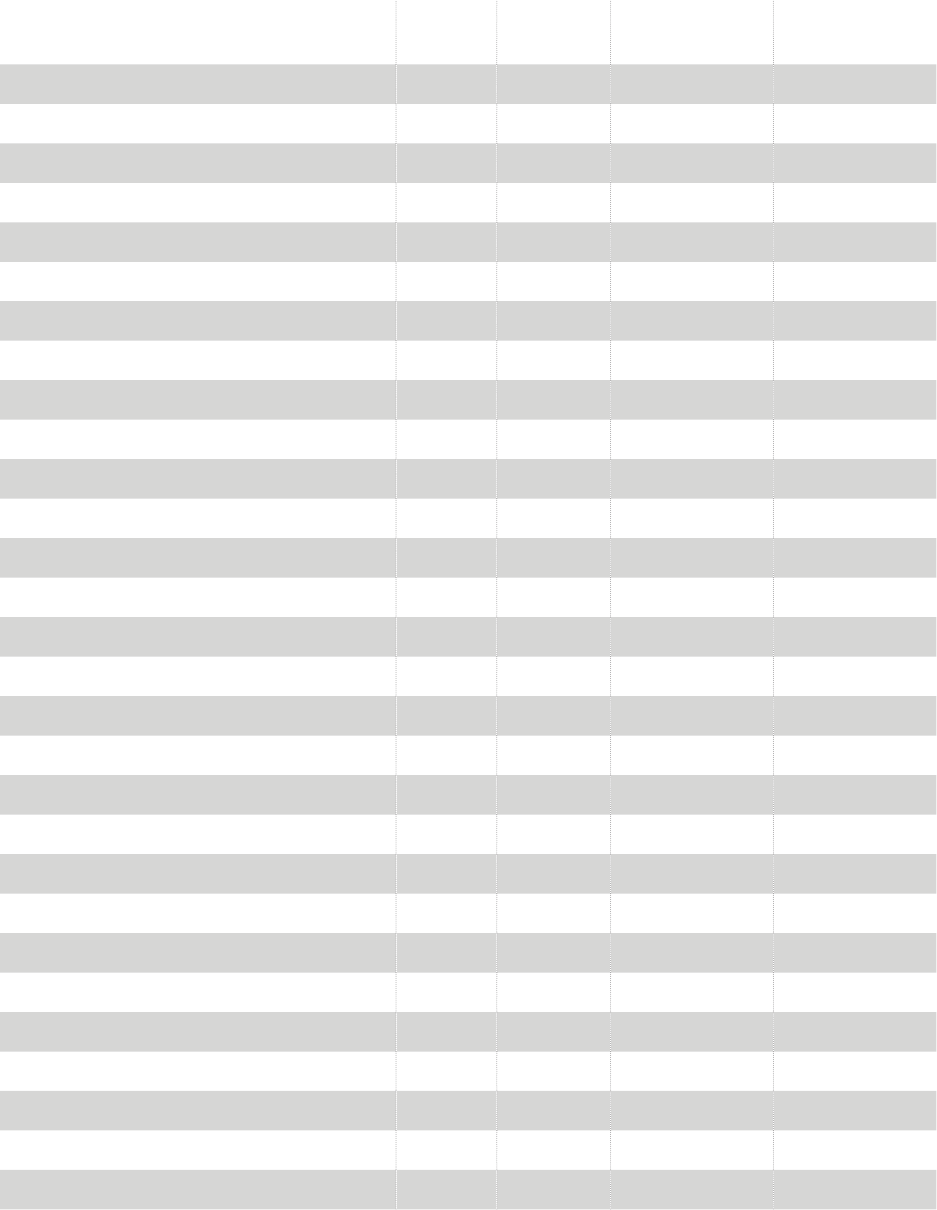
APPENDIX B: Scam type data table, consumer scams
SCAM TYPE
RISK
INDEX
EXPOSURE SUSCEPTIBILITY MEDIAN $ LOSS
Advance fee loan
57.2 1.4% 45.3% $ 900
Charity
0.5 0.3% 28.0% $ 70
Counterfeit product
14.4 2.2% 83.3% $ 80
COVID-19*
0.03 0.06% 5.1% $ 86
Credit card
13.3 1.1% 33.5% $ 380
Credit repair/debt relief
29.4 0.5% 55.7% $ 1,000
Debt collection
9.8 2.2% 9.2% $ 500
Employment
445.9 14.8% 15.1% $ 1,995
Fake check/money order
8.6 0.3% 26.7% $ 1,165
Family/friend emergency
7.8 0.3% 32.1% $ 900
Foreign money exchange
1.1 0.1% 1.4% $ 7,400
Government agency imposter
5.7 1.5% 26.2% $ 149
Government grant
21.0 0.7% 33.8% $ 948
Healthcare/Medicaid/Medicare
6.4 0.7% 19.1% $ 477
Home improvement
201.2 1.3% 74.7% $ 2,073
Identity theft
8.9 1.0% 28.9% $ 300
Investment/cryptocurrency**
520.9 1.7% 80.4% $ 3,800
Moving
6.3 0.2% 78.1% $ 350
Online purchase
244.9 41.9% 82.6% $ 71
Phishing/social engineering
56.5 12.6% 15.0% $ 300
Rental
17.8 0.6% 64.1% $ 504
Retail business imposter
4.4 0.7% 48.1% $ 129
Romance
151.4 0.6% 65.7% $ 3,600
Sweepstakes/lottery/prizes
10.4 2.5% 21.3% $ 200
Tax collection
4.4 0.1% 18.3% $ 2,306
Tech support
25.5 1.9% 26.6% $ 500
Travel/vacation/timeshare
23.6 0.7% 59.6% $ 543
Utility
5.7 0.5% 24.1% $ 463
Other
71.7 7.7% 44.5% $ 210
* The COVID-19 scam type was removed from BBB Scam Tracker on May 25, 2023.
** This year we combined cryptocurrency and investment scams into one category because most cryptocurrency scams
involve investment scenarios.
45 BBB.org/ScamTracker | 2023 BBB SCAM TRACKER RISK REPORT
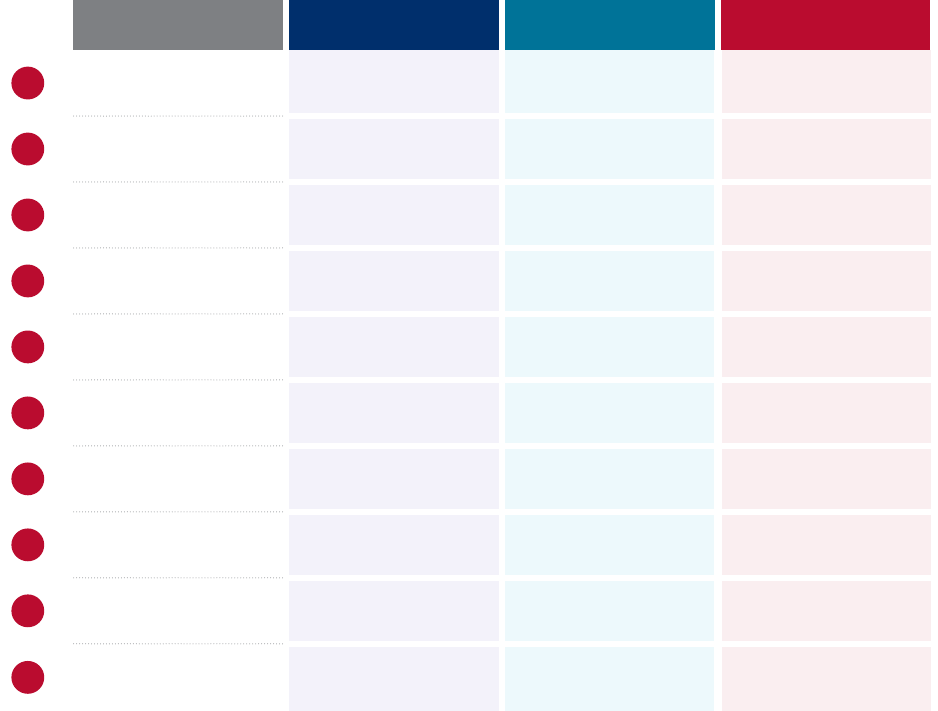
RISK INDEX EXPOSURE SUSCEPTIBILITY MEDIAN $ LOSS
1
Investment/
cryptocurrency
Online purchase Counterfeit product
Foreign money
exchange
2
Employment Employment Online purchase
Investment/
cryptocurrency
3
Online purchase
Phishing/
social engineering
Investment/
cryptocurrency
Romance
4
Home improvement
Sweepstakes/
lottery/prizes
Moving Tax collection
5
Romance Counterfeit product Home improvement Home improvement
6
Advance fee loan Debt collection Romance Employment
7
Phishing/
social engineering
Tech support Rental
Fake check/
money order
8
Credit repair/
debt relief
Investment/
cryptocurrency
Travel/vacation/
timeshare
Credit repair/
debt relief
9
Tech support
Government
agency imposter
Credit repair/
debt relief
Government grant
10
Travel/vacation/
timeshare
Advance fee loan
Retail business
imposter
Family/friend
emergency &
advance fee loan
APPENDIX C: Top 10 consumer scam types by overall risk, exposure,
susceptibility, and median dollar loss
46 BBB.org/ScamTracker | 2023 BBB SCAM TRACKER RISK REPORT

Acknowledgements
BBB Scam Tracker utilizes the trust of the 110-year-old BBB brand to collect data from
people who have been targeted by fraudsters. The program is made possible thanks to
the dedicated collaboration of BBBs working in communities across the United States
and Canada; BBBs review consumer reports to eliminate those that do not appear to be
actual scams, thus ensuring the best data possible.
We’d like to thank a team of BBB experts who provide guidance and input to BBB Institute
regarding the BBB Scam Tracker program, including Warren King, president and CEO,
BBB Serving Western Pennsylvania; Jane Rupp, president and CEO, BBB Serving
Northern Nevada and Utah; Craig Turner, director of information systems of the BBB
Serving Eastern & Southwest Missouri & Southern Illinois; Dené Joubert, investigations
manager of the BBB Great West + Pacific; and Lindsay Walsh, operations assistant, BBB
Serving Vancouver Island,The Gulf Islands, Haida Gwaii and Powell River.
We would also like to thank the International Association of Better Business Bureaus for
its support of BBB Institute and the 2023 BBB Scam Tracker Risk Report. We extend a
special thank you to IABBB senior research director Dr. Rubens Pessanha, MBA, PMP,
SPHR, GPHR, SHRM-SCP; IABBB data quality analyst Ryan Hessling; and IABBB data
quality analyst Logan Haskew, for analyzing the BBB Scam Tracker and survey research
data for this report. We also give thanks to IABBB director of public relations and social
media Melanie McGovern, IABBB director of content and SEO Sara Grube, IABBB
director of brand management Jody Thomas, and IABBB deputy general counsel
Angela Isabell for providing their insights and input and helping us share these findings
with the public.
47 BBB.org/ScamTracker | 2023 BBB SCAM TRACKER RISK REPORT

Project team
Logan Haskew is a data quality analyst for the International Association of Better
Business Bureaus. With a background in engineering and data science, he is an advocate
for data-driven decision-making for both consumers and enterprises alike. When not
working, he can be found traveling to some far corner of the United States with his wife
and three dogs. Logan is the coauthor of the 2022 BBB Scam Tracker Risk Report and
Targeting Our Youth: How Scams Are Impacting Ages 18–24.
Ryan Hessling is a data quality analyst for the International Association of Better
Business Bureaus. Coming from a career in the environmental sciences, Ryan has
experience in data gathering, processing, and analysis. He enjoys how much can
be learned and inferred by diving into data sets from around the world. A native of
southeastern Connecticut, he has two degrees from Three Rivers Community College
and a bachelor’s from the University of Connecticut. During his downtime, when he is
not taking a new course or working on projects, you can find him by the ocean reading
a book or walking his dog.
Dr. Rubens Pessanha, MBA, PMP, GPHR, SPHR, SHRM-SCP, is the senior director
of research and development at the International Association of Better Business
Bureaus. Rubens has more than 20 years of global experience in marketing, strategic
organizational development, project management, and market research. He has
presented at conferences in North America, Asia, Europe, Africa, and South America.
A production engineer with an MBA, he completed his doctorate at George Washington
University. He is the coauthor of the BBB Scam Tracker Risk Report (2017–2022), Scams
and Your Small Business (2018), Cracking the Invulnerability Illusion (2016), The State of
Cybersecurity (2017 and 2018), the BBB Trust Sentiment Index (2017), 5 Gestures of Trust
(2018), Targeting Our Youth: How Scams Are Impacting Ages 18–24, and the BBB Industry
Research Series—Airlines (2018), among other titles. As a hobby, Rubens teaches
project management, business ethics, strategy, and marketing for graduate and
undergraduate students.
Melissa "Mel" Lanning Trumpower is the executive director of the BBB Institute for
Marketplace Trust. Mel has more than 25 years of nonprofit leadership experience
working with a wide range of nonprofit organizations and trade associations. In addition
to leading BBB Institute, Mel is the coauthor of Targeting Our Youth: How Scams Are
Impacting Ages 18–24, Start With Trust Online: Online Scams (2022), the Online Purchase
Scams Report (2020 and 2021), the BBB Scam Tracker Risk Report (2017–2022),
Scams and Your Small Business (2018), the Employment Scams Report (2020), and
Building Better Together: The BBB Impact Report (2021). Mel has a bachelor’s degree
from Cornell University and a master’s degree from Johns Hopkins University.
48 BBB.org/ScamTracker | 2023 BBB SCAM TRACKER RISK REPORT


